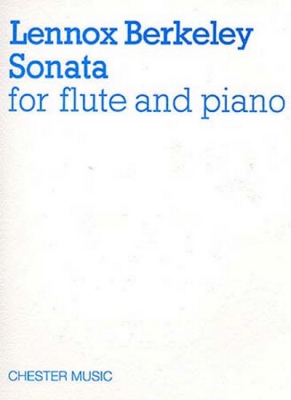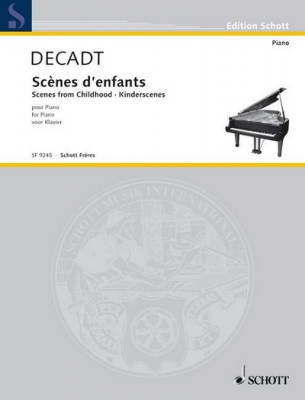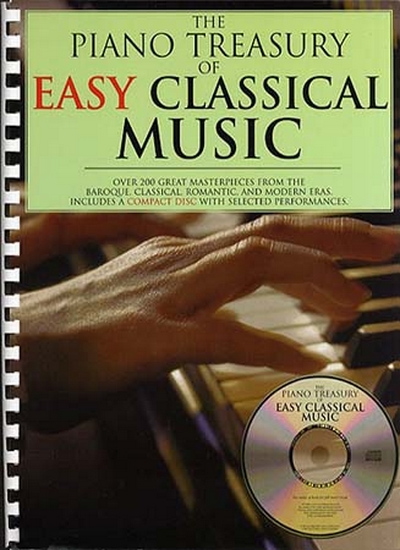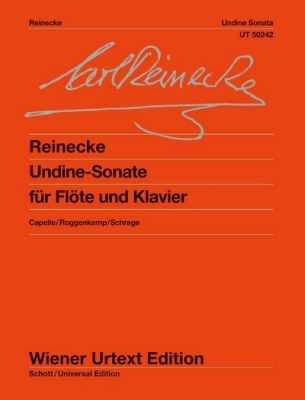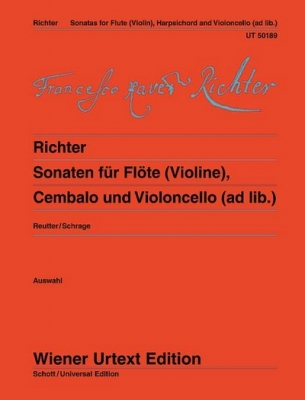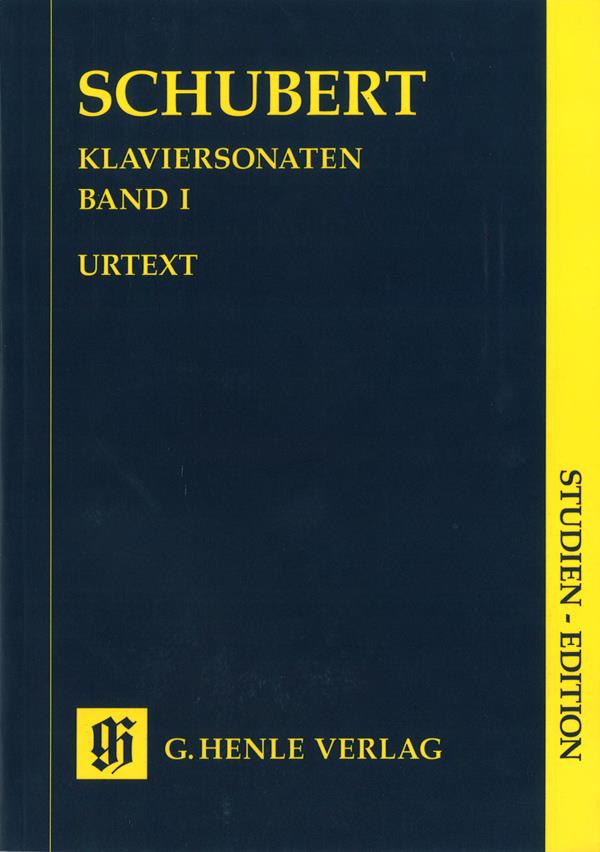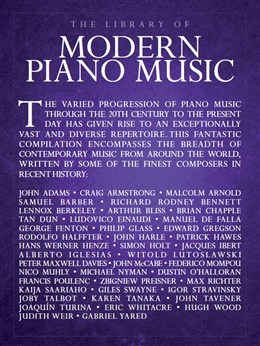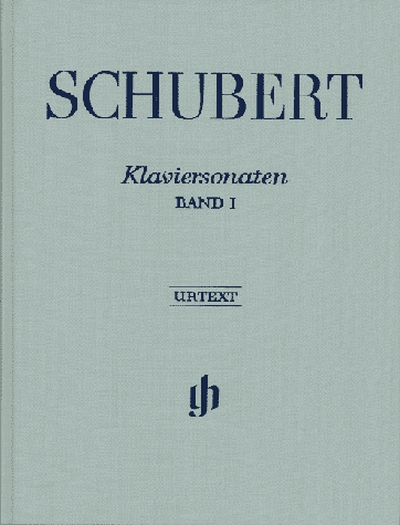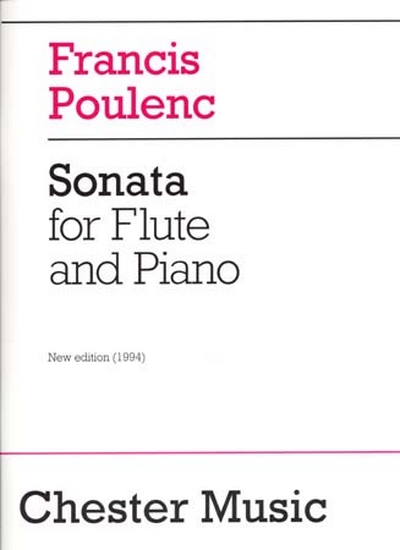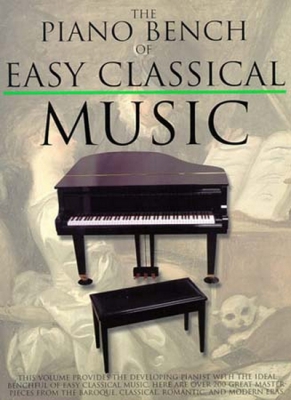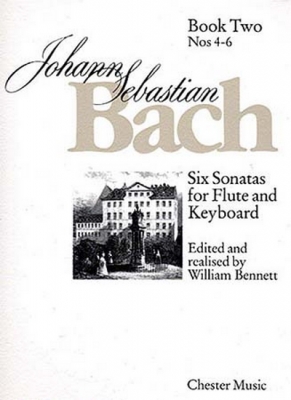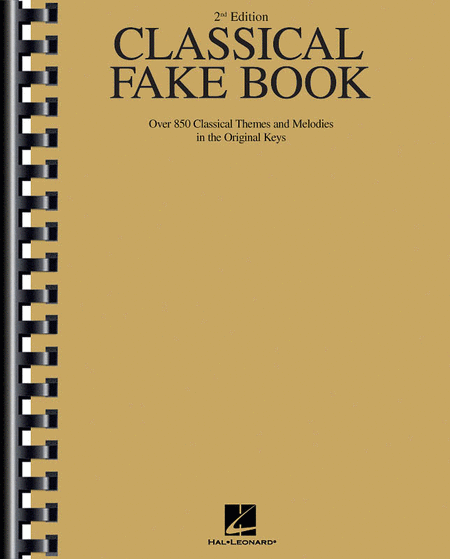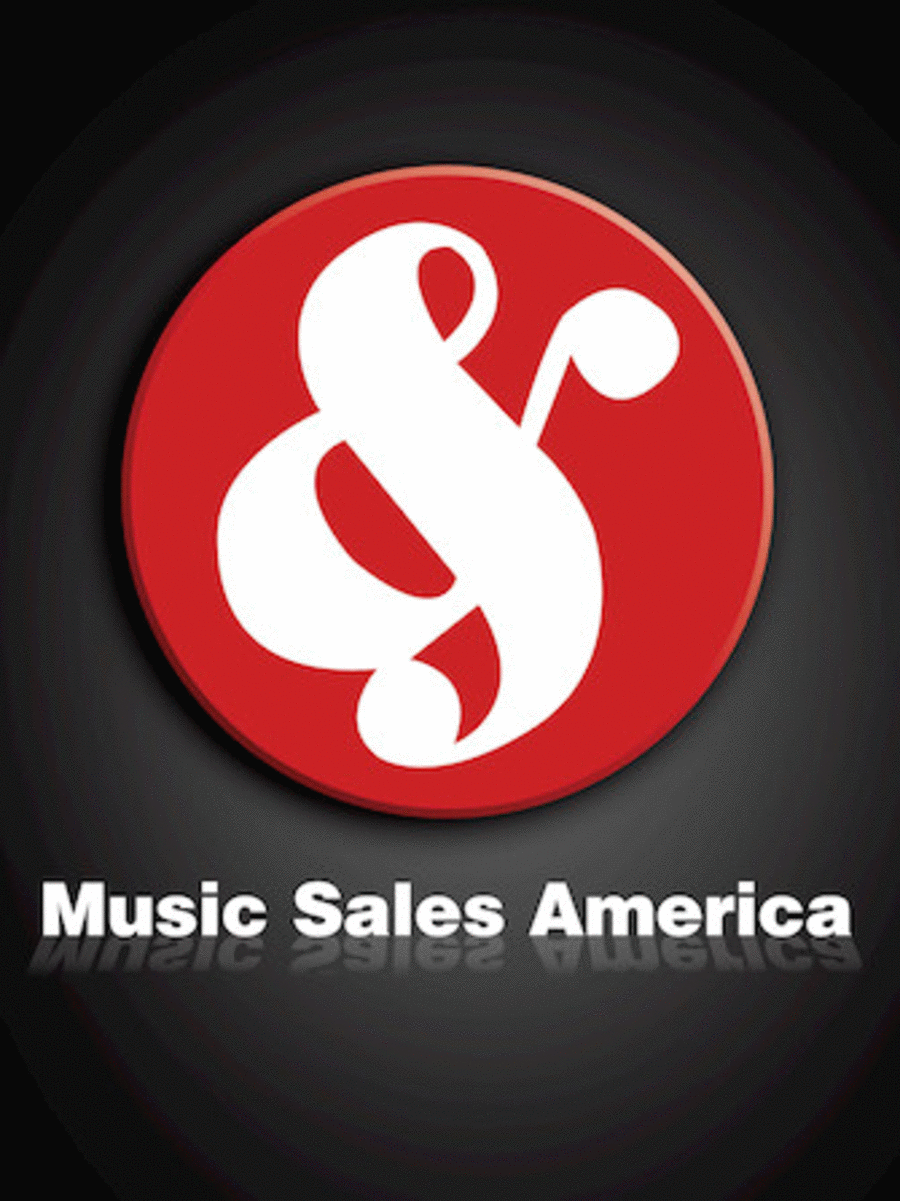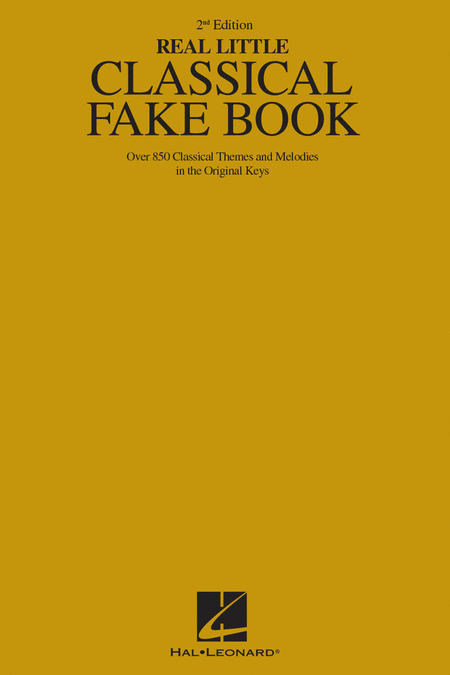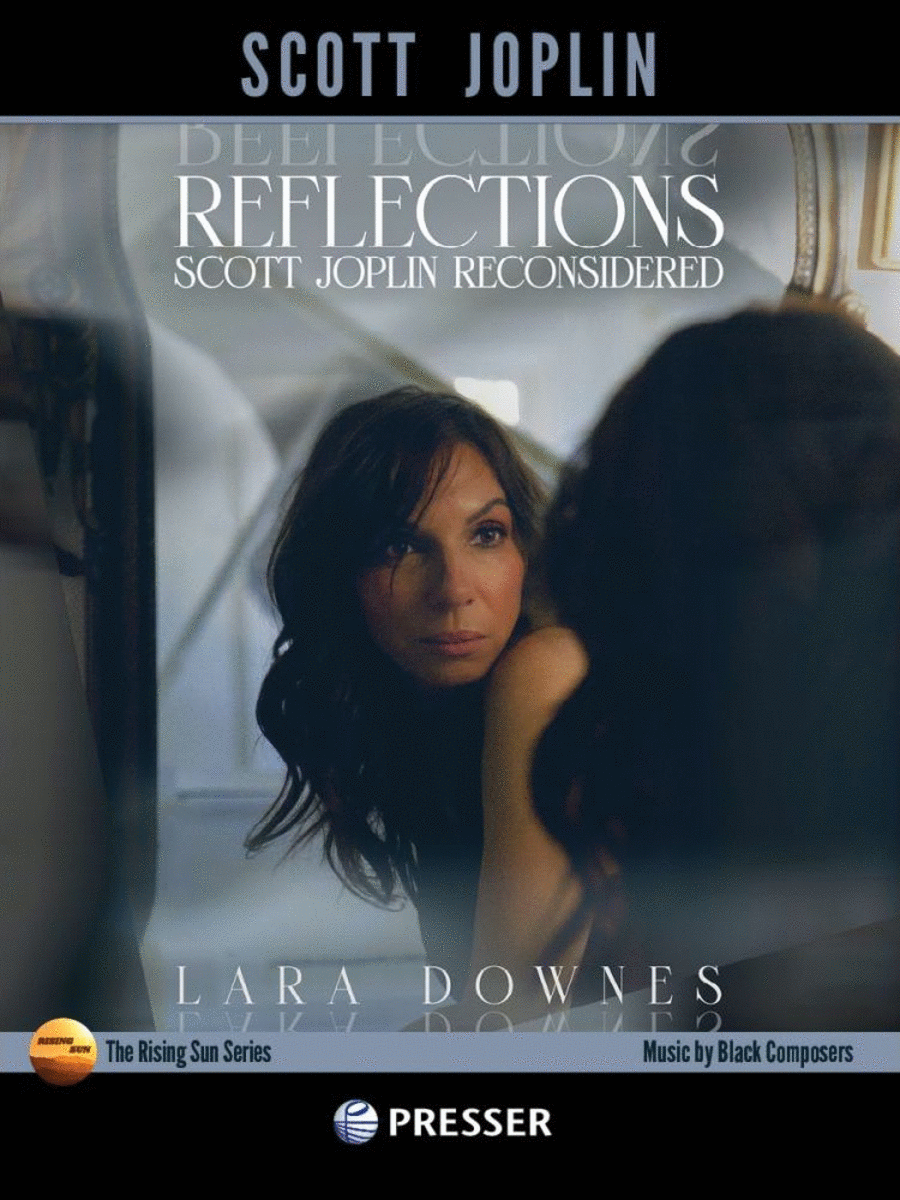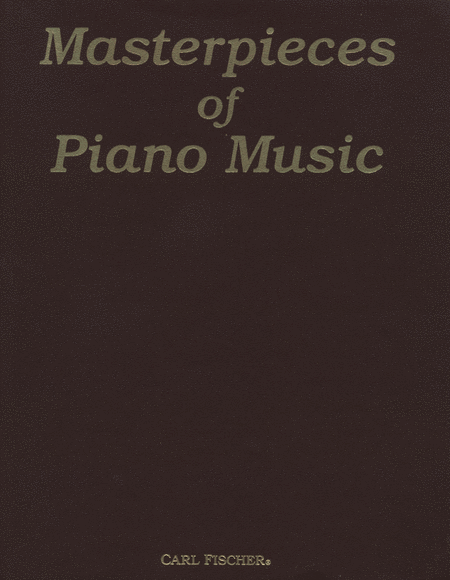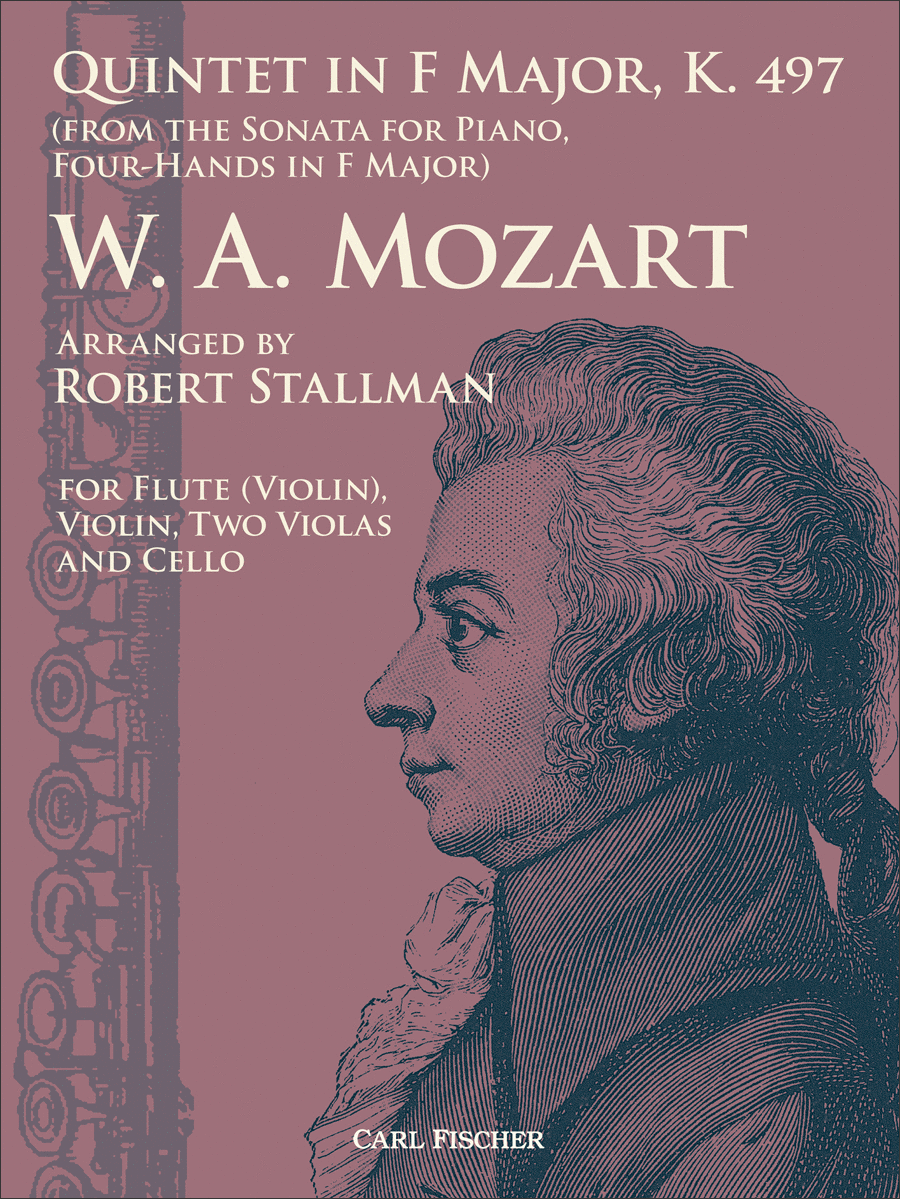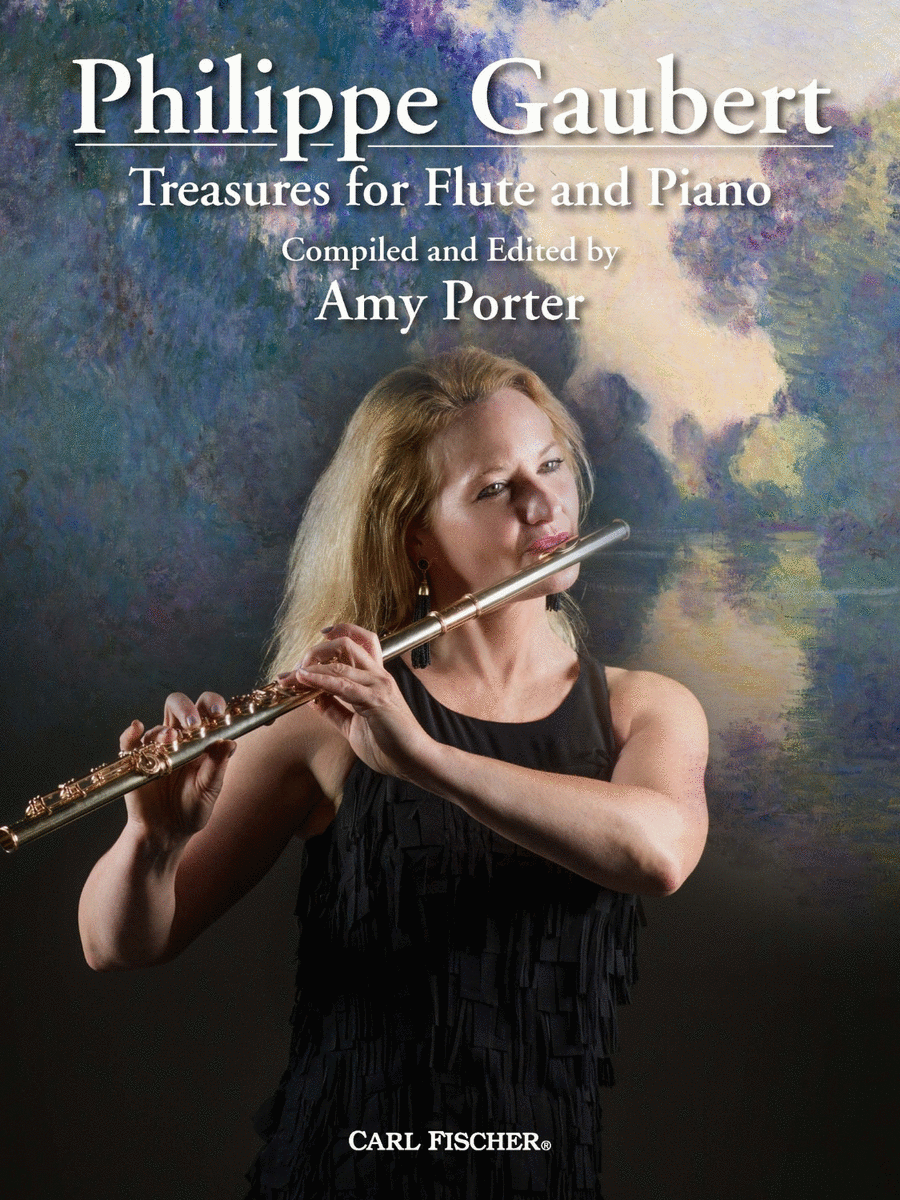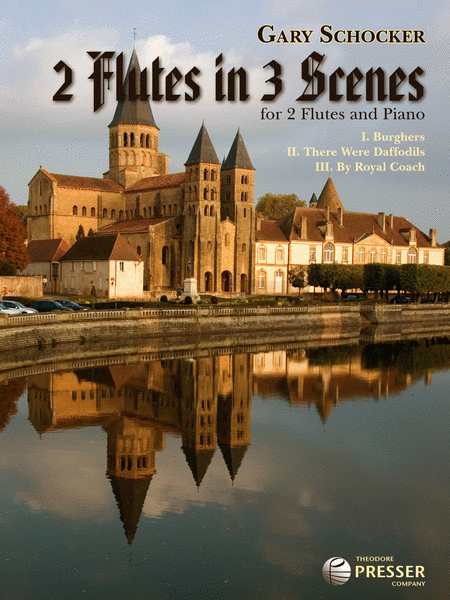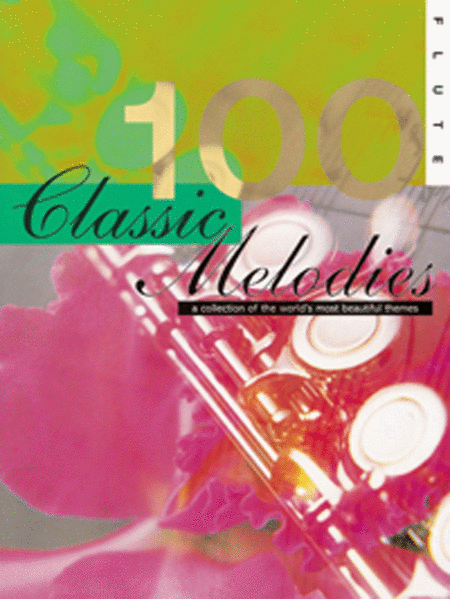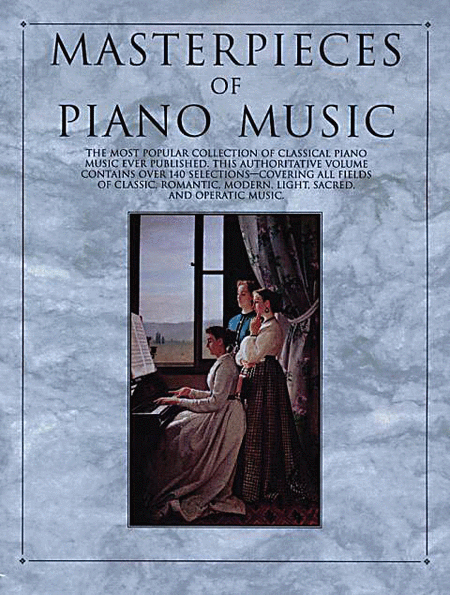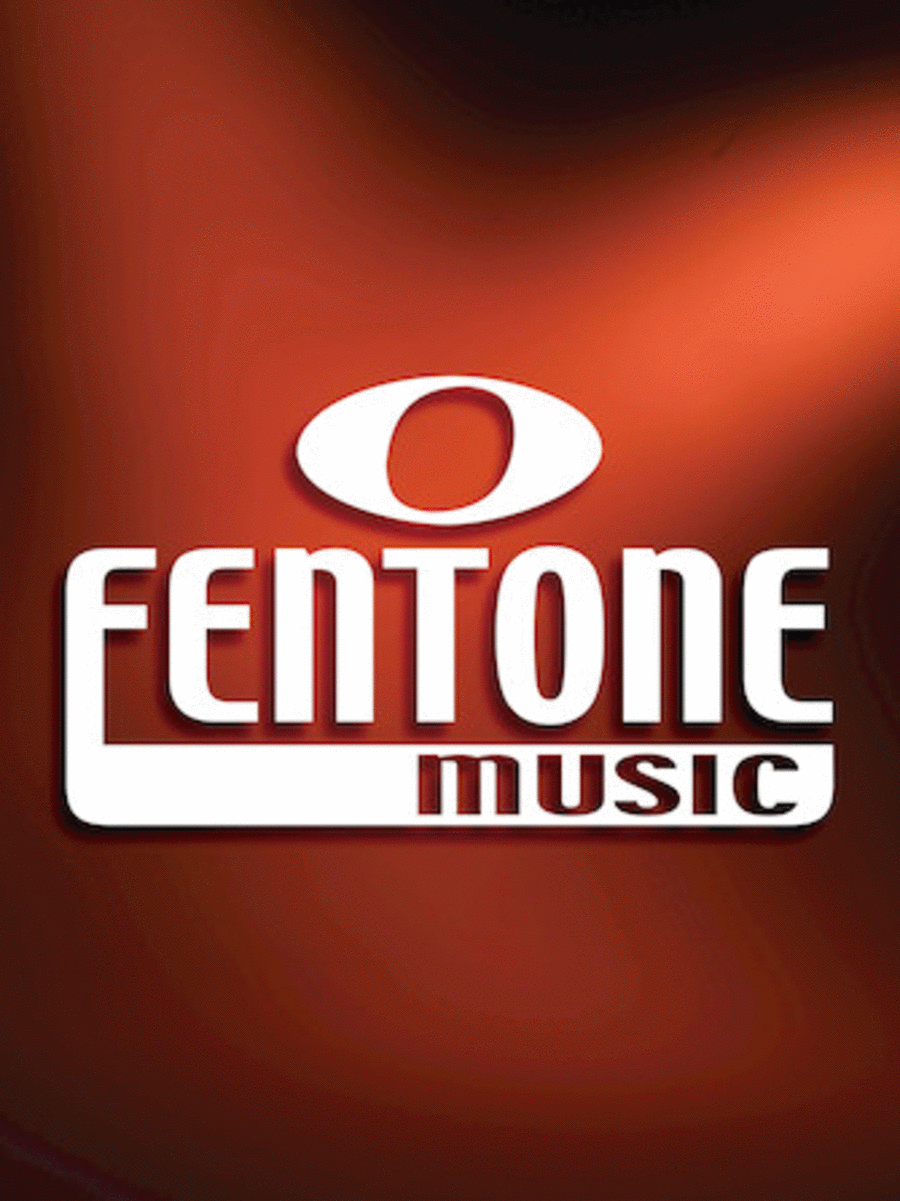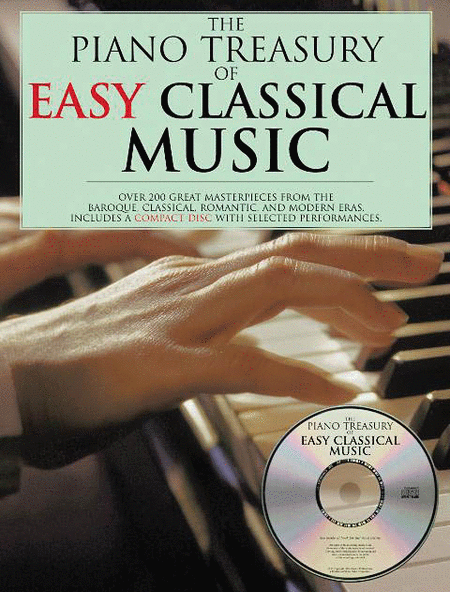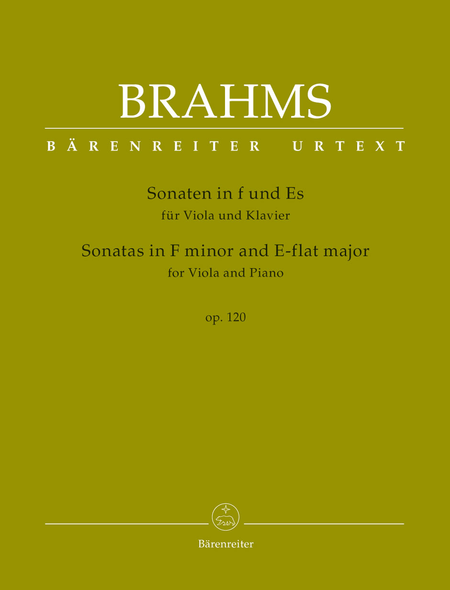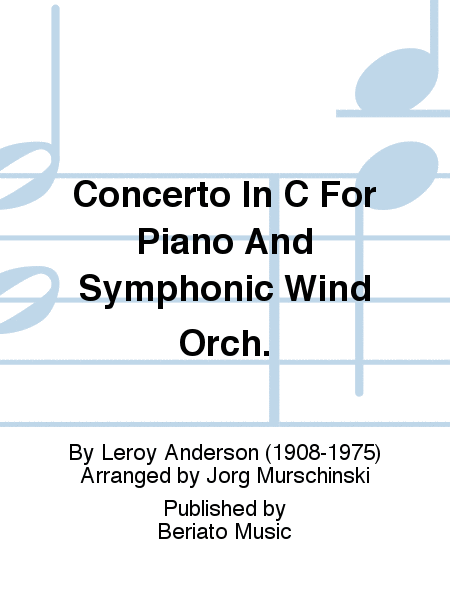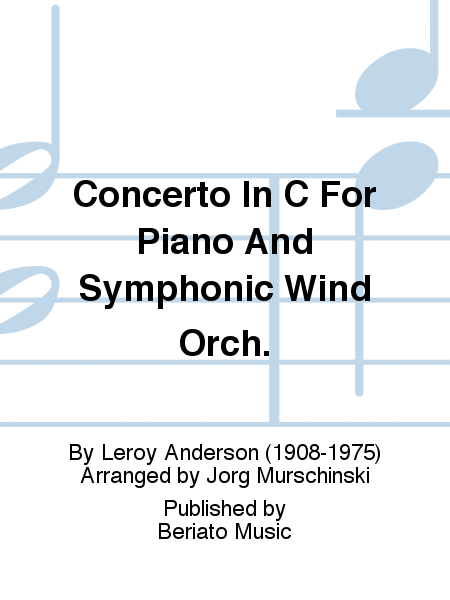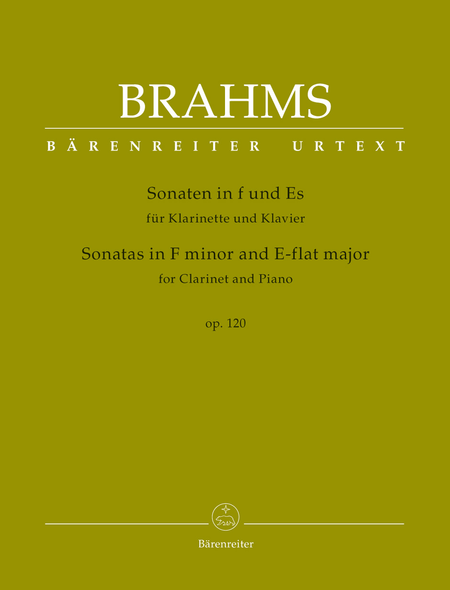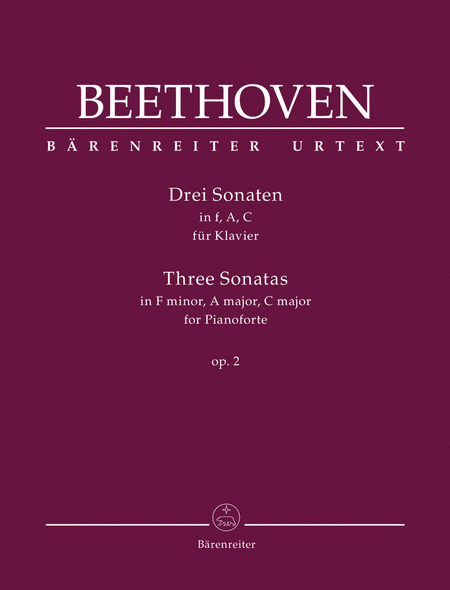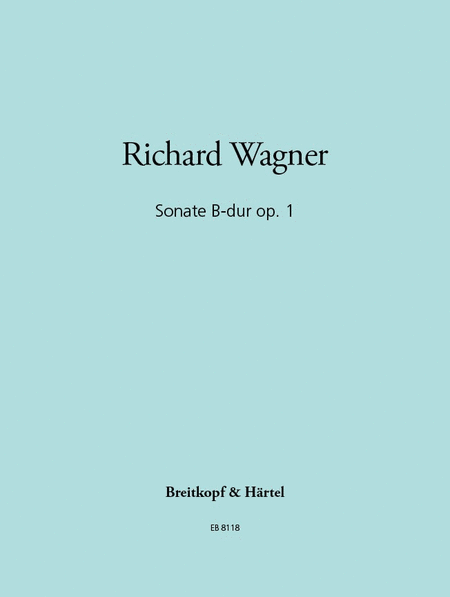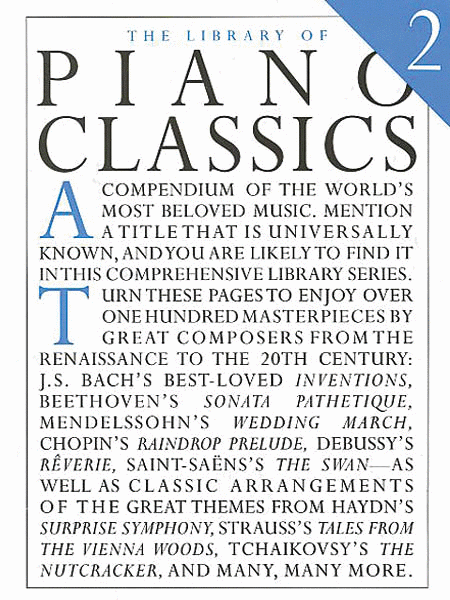|
| 1001 All-Time Hit Songs
Ligne De Mélodie, (Paroles) et
Accords [Partition]
Amsco Wise Publications
Third edition of the world's biggest songbook. This is a vast bumper collection,...(+)
Third edition of the world's biggest songbook. This is a vast bumper collection, perfect for buskers, of 1001 all-time hit songs.Whatever your taste, there's guaranteed to be tonnes of songs you'll want to play, this book will last you years!Inside the spiral bound cover you will find a generous selection of hit songs, golden standards, jazz and blues numbers, classical pieces, hymns, gospel songs, stage, film and musical music! Arranged here in Melody line arrangements for Piano, Organ, Electronic Keyboards, Guitar and all C instruments, complete with lyrics and chord symbols. / Ligne Mélodique, Paroles Et Accords (Avec Grilles D'Accords)
Délais: 2-5 jours - En Stock Fournisseur | | |
| Balta Ainava - White
Scenery (Winter)
Piano seul
Schott
Peteris Vasks occupe une position particulière dans le cercle des compositeurs ...(+)
Peteris Vasks occupe une position particulière dans le cercle des compositeurs baltes. Il n'est pas seulement le compositeur le plus important et populaire jamais à sortir de la Lettonie, il parle toujours à ses auditeurs avec une intensité fervente qui semble pointer vers quelque chose de supérieur. Cet aspect supérieur est sans doute quelque chose qui se dresse au-dessus du monde de l'humanité, mais est également présent en chacun de nous: la nature divine.'Je suis profondément enracinée dans la nature, dans la nature du Nord. Elle influe sur toute ma musique. La nature nous savons, c'est aussi tout à fait différents, nous avons quatre saisons bien distinctes. L'hiver est très long, l'été très court et donc d'autant plus belle et désirée. Les saisons intermédiaires sont tout à fait spectaculaire. 'Le premier de pièces Saisons Peteris Vasks n'a pas été écrit dans l'intention de former un cycle complet. Pour son ami, Talivaldis Deksnis, il compose en 1980 Balta ainava - Musique Printemps - Paysage blanc (hiver), en 1981 Rudens Muzika - Musique automne, et en 1995, le Muzika Pavasara. En 2008, Zala ainava - Paysage vert (été) a vu le jour, la pièce qui a achevé le cycle.En 2009, comme une sorte de 'rappel', écrit Vasks Vasaras vakara Muzika - Musique pour une soirée d'été basée sur des croquis anciens, ce qui, de toutes les pièces, est la plus ancrée dans la tradition. Seuls les deux derniers morceaux - qui tous deux ont à voir avec l'été - ont une structure fixe métrique. Les trois premières oeuvres sont métriquement libre, notée sans barres de mesure, ce qui leur donne un caractère d'improvisation.Vasks dit des pièces individuelles dans le cycle: 'Dans tout ce que Balta ainava est blanc. Une nouvelle année commence. C'est une méditation calme, un nouveau départ, avec seulement deux thèmes.Pavasara Muzika. Sonata quasi una - la pièce la plus exigeante dans ce cycle - est intense, un développement impressionnant. Le printemps arrive lentement, avec beaucoup de drame. C'est comme une bataille, jusqu'à ce qu'il soit là, tout simplement. Cette pièce aux multiples facettes, avec ses chants d'oiseaux, des vies de conflits et l'intensification dramatique et se termine en ravissement extatique. Zala ainava est basé sur deux thèmes. Notre été est très brève et offre un répit après les batailles. Et il est si beau! La musique reflète la joie et le contentement. Le premier thème apporte une sorte d'énergie pure, le second est plus dévoué à la peinture ton. A la fin, une citation de cinq notes d'une chanson folklorique bien connu letton sur un ivrogne se fait entendre.Rudens Muzika commence pianissimo sur une journée tranquille Septembre, dans une atmosphère paisible et ensoleillé. Maintenant, les tempêtes de l'automne déferler sur la terre- une douce tristesse se dépose sur les personnes et sur la nature, qui cède sa splendeur. Après une tempête dernier grand, la neige vient à nouveau comme un symbole de purifier conclusion et un nouveau départ. Vasaras vakara Muzika a lieu à l'extrémité tranquille d'une journée d'été. Le soleil se couche. Lenteur. Souvenirs de la surface des expériences précédentes. Avec l'apparence des souvenirs 's'accompagne d'une augmentation de l'intensité. Vers la fin, une sorte de chant populaire se fait entendre: 'Nous avons survécu à l'époque de la tyrannie et de conserver notre identité'. La fin est calme, tout est endormi. 'Christoph SchlürenTraduction: John Patrick Thomas et Richard W. Rieves / Piano
Délais: 2-5 jours - En Stock Fournisseur | | |
| New Busker's
Fakebook 1001 All-Time
Hit Songs
[Sheet music] - Facile
Music Sales
The second volume of a thousand and one all-time hit songs ranging from essentia...(+)
The second volume of a thousand and one all-time hit songs ranging from essential standards to the latest pop hits - a must for all singers and musicians. / Chant Et Guitare
Délais: 2-5 jours - En Stock Fournisseur | | |
| Piano Treasury Of Easy
Classical Music Cd
Piano seul [Partition + CD]
Amsco Wise Publications
Compilation. The Piano Treasury of Easy Classical Music is designed to be the co...(+)
Compilation. The Piano Treasury of Easy Classical Music is designed to be the cornerstone of your personal music library. This tremendous piano collection contains 400 pages of great music literature, specially selected and edited for the pianist who loves classical music. No other single volume can provide the wealth of exquisite piano selections contained within these pages. Here you will find the world's favourite inventions, preludes, fugues, minuets, sonata movements, nocturnes, waltzes, mazurkas, intermezzos, romantic short pieces, impressionistic works, and light classics, as well as the most rewarding traditional arrangements of themes from the great symphonies, chamber works, operas, and ballets by the master composers of the past four centuries. / Niveau : Elémentaire / Rép Classique / Recueil / Piano
Délais: 2-5 jours - En Stock Fournisseur | | |
| Undine Sonata Op. 167
Flûte traversière et
Piano
Wiener Urtext
La Sonate Ondine pour flute et piano est l'un des quelques oeuvres du compositeu...(+)
La Sonate Ondine pour flute et piano est l'un des quelques oeuvres du compositeur Carl Reinecke, qui est effectuée régulièrement encore aujourd'hui et qui est en même temps une des rares pièces répertoire romantique pour les flûte traversière. Bien que pas manifestement programme musique à première vue et parfois même interrogée comme tel par ses contemporains, le travail néanmoins retombe sur le sujet d'Ondine, qui a été un thème de l'opéra populaire au XIXe siècle. La Wiener Urtext édition présente maintenant une nouvelle publication de l'ouvrage qui suit de près le texte de l'édition originale (malheureusement, sources manuscrites n'existent pas). Les notes sur l'interprétation suivent les traces du programme extramusicales, essayant de faire les travaux et sa compréhension d'interprétation en étroite connexion avec le sujet Ondine. / Flûte Traversière Et Piano
Délais: 2-5 jours - En Stock Fournisseur | | |
| Sonatas
Flûte Traversière (Ou
Violon), Clavecin Obligatoire (Piano)
Violoncelle Ad Libitum
Wiener Urtext
Franz Xaver Richter (1709-1789) est un des représentants plus importants de ce ...(+)
Franz Xaver Richter (1709-1789) est un des représentants plus importants de ce qui est connu comme l'école de Mannheim, un style qui a influencé non seulement Mozart, mais aussi le jeune Beethoven et même certains des premiers compositeurs romantiques. L'importance de Richter and rsquo - musique de chambre s dans l'évolution des principaux genres de classicisme viennois mérite d'être reconnu, montrer la voie, comme elle le fait de la Sonate en trio Baroque pour les précurseurs immédiats de quatuor à cordes classique. Richter and rsquo - sonates de s pour les flûte, oeuvre de clavecin et violoncelle sont des jalons sur la même route. Ces pièces ont été écrites dans la tradition de j. s. Bach and rsquo - sonates de s avec clavecin obligé et peuvent supporter la comparaison avec les meilleures oeuvres de Bach and rsquo - s fils Carl Philipp Emanuel. Dans cette édition de Wiener Urtext, nous présentons une sélection de trois sonates qui peut également être joué avec un violon à la place de la flûte. La pièce peut également être effectuée sans le violoncelle, si nécessaire. Susanne Schrage and rsquo... / Flûte Traversière (Ou Violon), Clavecin Obligatoire (Piano) Violoncelle Ad Libitum
Délais: En Stock | | |
| Piano Sonatas, Vol.I
(SCHUBERT FRANZ)
Piano seul [Conducteur d'étude / Miniature]
G. Henle
Par SCHUBERT FRANZ. Les 22 sonates pour piano de Schubert reflètent très fidè...(+)
Par SCHUBERT FRANZ. Les 22 sonates pour piano de Schubert reflètent très fidèlement le cheminement musical de ce compositeur disparu trop tôt. Partant des premiers essais effectués entre seize et dix-neuf ans, elles permettent de retracer l’évolution constante de son écriture jusqu’aux cinq grandes so-nates composées entre 1823 et 1826, puis aux trois sonates magistrales composées peu de temps avant sa mort qui le placent incontestablement au même niveau de maîtrise que Beetho-ven dans ce domaine. L’édition Urtext en trois volumes des sonates pour piano de Franz Schubert aux éditions Henle contient dans ce volume I sept sonates des deux premières périodes toutes passées à la postérité avec desnuméros d’opus spécifiques. Seules deux furent éditées du vivant de Schu-bert. Le volume commence par la sonate sans doute la plus connue de ces deux périodes, la sonate en La majeur D 664, op. post. 120. Compte tenu de l’écart important entre les dates de composition – 1817, 1823, 1825– ces oeuvres sont très différentes du point de vue formel et dans leur expression. / Partition brochée / Date parution : 1905-06-20/ Répertoire / Piano
Délais: 2-5 jours - En Stock Fournisseur | | |
| The Library Of Modern
Piano Music
Piano seul [Partition] - Intermédiaire/avancé
Amsco Wise Publications
Some of the most beautiful and diverse pieces by some of the finest composers in...(+)
Some of the most beautiful and diverse pieces by some of the finest composers in recent history are included in this enormous Library Of Modern Piano Music. Such a comprehensive collection of brilliant works for solo Piano belies the rich quality and sheer amount of music being composed that just begs to be learned. Over 100 fantastic pieces are guaranteed to keep you learning from this truly classic selection until the next century!The Library Of Modern Piano Music boasts an unprecedented volume and variety of amazing compositions, some well-known, some more unfamiliar, some composed as standalone pieces and others as film scores, but the one thing uniting them all is their impeccable musicality and how enjoyable they are to play. Featuring the biggest names in contemporary classical music, composers like Einaudi lend their wonderful compositions (Primavera, Una Mattina), and all-round geniuses like Philip Glass are represented with a generous selection of their finest work (Metamorphosis Five, Opening Piece From Glassworks and more).The varied progression of Piano music through the 20th century to the present day has given rise to an exceptionally vast and diverse repertoire. The unbelievable depth of the composers included here means you'll rarely be stuck for something to play. Kaija Saariaho, Stravinsky, Francis Poulenc, Dustin O'Halloran, Nico Muhly and Witold Lutoslawski are genuinely just a fraction of the composers featured in The Library Of Modern Piano Music. Some great standalone compositions like Samuel Barber's incomparable Adagio For Strings sit aside excerpts from longer works like a portion of Edward Gregson's An Album For My Friends or Joby Talbot's Once Around The Sun.If you happen to be a fan of film and television scores, a taste of Michael Nyman's distinguished score for The Piano is included, a section from Crouching Tiger, Hidden Dragon, as well as parts of Richard Rodney Bennett's score for the now rarely-seen but superb 1980s miniseries of Tender Is The Night. Many established composers are included in this collection who are widely-recognised as masters. However, The Library Of Modern Piano Music also includes many young virtuosos who have not yet achieved that status but are certainly well on their way.These original compositions span standalone pieces, albums, suites and arrangements from diverse talents, making The Library Of Modern Piano Music a collection that is certain to be seen by future generations as a perfect collection of the best of contemporary classical music. / Piano
Délais: 2-5 jours - En Stock Fournisseur | | |
| 3 Sonatas For Piano F
Minor, A Major, C Major
Op. 2
Piano seul
Barenreiter
Bärenreiter continues its Urtext edition of the complete Beethoven piano sonata...(+)
Bärenreiter continues its Urtext edition of the complete Beethoven piano sonatas with an important contribution. The frequently played Sonatas op. 2, Nos. 1-3, stem from the time when the young composer took lessons from Joseph Haydn in Vienna and are dedicated to his teacher. After Beethoven's three early sonatas which he wrote as a youth in Bonn, the so-called 'Kurfürsten-Sonaten?, Beethoven started 10 years later, in the mid 1790s, to develop a style independent from the legacy of Mozart and Haydn and presented with his op. 2 his first fully valid piano sonatas. The acclaimed Beethoven specialist Jonathan Del Mar has consulted every known source for this scholarly-critical Urtext performing edition. In addition he has analysed various copies of the prints published during Beethoven's lifetime. The result of his accurate research is presented in a meticulously edited musical text at the cutting edge of scholarship, together with a detailed Critical Commentary. The volume stands out in terms of its elegant and well-presented layout. Special emphasis has been placed on optimum page-turns and on the consideration of the flow of the music. The highly informative Introduction on the genesis and significance of the sonatas is supplemented by valuable notes on historical performance practice. - New scholarly-critical performing edition at the cutting edge of scholarship - Optimum page-turns - Introduction with valuable notes on historical performance practice (Eng/Ger) - Detailed Critical Commentary (Eng) / Piano
Délais: En Stock | | |
| Piano Sonatas, Vol.I
(SCHUBERT FRANZ)
Piano seul
G. Henle
Piano Sonatas, Volume I. Par SCHUBERT FRANZ. Les 22 sonates pour piano de Schube...(+)
Piano Sonatas, Volume I. Par SCHUBERT FRANZ. Les 22 sonates pour piano de Schubert reflètent très fidèlement le cheminement musical de ce compositeur disparu trop tôt. Partant des premiers essais effectués entre seize et dix-neuf ans, elles permettent de retracer l’évolution constante de son écriture jusqu’aux cinq grandes so-nates composées entre 1823 et 1826, puis aux trois sonates magistrales composées peu de temps avant sa mort qui le placent incontestablement au même niveau de maîtrise que Beetho-ven dans ce domaine. L’édition Urtext en trois volumes des sonates pour piano de Franz Schubert aux éditions Henle contient dans ce volume I sept sonates des deux premières périodes toutes passées à la postérité avec desnuméros d’opus spécifiques. Seules deux furent éditées du vivant de Schu-bert. Le volume commence par la sonate sans doute la plus connue de ces deux périodes, la sonate en La majeur D 664, op. post. 120. Compte tenu de l’écart important entre les dates de composition – 1817, 1823, 1825– ces oeuvres sont très différentes du point de vue formel et dans leur expression. / Partition reliée / Répertoire / Piano
Délais: 2-5 jours - En Stock Fournisseur | | |
| Sonata Flûte/Piano
(POULENC FRANCIS)
Flûte traversière [Partition] - Intermédiaire/avancé
Chester
Par POULENC FRANCIS. Cette Sonate pour flûte et piano est un solo de flûte vir...(+)
Par POULENC FRANCIS. Cette Sonate pour flûte et piano est un solo de flûte virtuose par le célèbre influents compositeur français Francis Poulenc. Ecrit en 1956-1957, il s'agit d'un élégant, la chambre de travail de rêve et il a démontré son habileté évidente de composition, en soulignant également l'affinité française avec les doux sons de la flûte.
Cette édition 1994 a été soigneusement Nouveau édité par Carl Schmidt et est une édition faisant autorité qui contient un historique détaillé et les commentaires complets du processus de rédaction en anglais, français et allemand. / Niveau : Intermédiaire à Avancé / Rép Classique / Répertoire / Flûte Traversière
Délais: En Stock | | |
| The Piano Bench Of Easy
Classical Music
Piano seul [Sheet music] - Facile
Music Sales
The Piano Bench Of Easy Classical Music is a tremendous piano collection contain...(+)
The Piano Bench Of Easy Classical Music is a tremendous piano collection containing 400 pages of great music literature, specially selected and edited for the developing pianist who loves classical music. Here you will find the world's favorite preludes, minuets, sonata movements, nocturnes, waltzes, gavottes, mazurkas, romantic short pieces, impressionistic works, and light classics- as well as themes from the great symphonies, chamber works, operas, and ballets by the master composers of the past four centuries. / Piano
Délais: 2-5 jours - En Stock Fournisseur | | |
| 6 Sonates Flûte /
Piano Book 2 No 4-6
Flûte traversière et
Piano [Partition]
Chester
Les six sonates pour flûte de J.S. Bach se divisent en deux groupes de trois. D...(+)
Les six sonates pour flûte de J.S. Bach se divisent en deux groupes de trois. Dans nos 1-3 le compositeur a fourni une partie de clavier concertante, où la droite est aussi importante que musicalement la flûte et des lignes de basse, en dehors du passage occasionnel quand il revient à une basse chiffrée. N o 4-6, cependant, d'adopter le modèle en quatre mouvements favorisés, par exemple, de Telemann. Cette édition est a été édité et réalisé par William Bennett.
La partie de flûte solo est également inclus sur un encart séparé. / Flûte Traversière / niveau : Intermédiaire / Avancé / Partition
Délais: 2-5 jours - En Stock Fournisseur | | |
| All The Tunes You'Ve
Ever Wanted To Play !
Piano seul
Omnibus Press
Plus de 100 mélodies piano intemporels ont été regroupés en un seul volume d...(+)
Plus de 100 mélodies piano intemporels ont été regroupés en un seul volume de haute qualité pour que vous puissiez jouer à la maison. De Bach aux Beatles, de Chopin aux alentours, ce sont les classiques de piano à feuillage persistant que tout le monde aime ! Ces arrangements légèrement simplifiées d'accompagnement Piano et guitare conservent leur caractère et la mélodie classique tout en offrant la possibilité de développer des joueurs à en profiter. / Piano
Délais: 2-5 jours - En Stock Fournisseur | |
|
|
|
| Classical Fake Book - 2nd Edition
Fake Book [Fake Book] - Facile
Hal Leonard
(Over 850 Classical Themes and Melodies in the Original Keys) For C instrument. ...(+)
(Over 850 Classical
Themes and Melodies in
the Original Keys) For C
instrument. Format:
fakebook (spiral bound).
With vocal melody
(excerpts) and chord
names. Lassical. Series:
Hal Leonard Fake Books.
646 pages. 9x12 inches.
Published by Hal Leonard.
(8)$49.99 - Voir plus => AcheterDélais: 24 hours - In Stock | | | |
| Buskers Fake Book All Time Hit
Piano seul
Music Sales
| | | |
| The Real Little Classical Fake Book - 2nd Edition
Piano seul - Intermédiaire
Hal Leonard
Composed by Various. For Piano/Keyboard. Hal Leonard Fake Books. Classical. Diff...(+)
Composed by Various. For
Piano/Keyboard. Hal
Leonard Fake Books.
Classical. Difficulty:
medium to
medium-difficult.
Fakebook. Melody line,
chord names and lyrics
(on some songs). 413
pages. Published by Hal
Leonard
$27.50 - Voir plus => AcheterDélais: 24 hours - In Stock | | | |
| Reflections
Piano seul
Theodore Presser Co.
Scott Joplin Reconsidered. Composed by Scott Joplin (1868-1917). Edited by L...(+)
Scott Joplin
Reconsidered.
Composed by Scott Joplin
(1868-1917). Edited by
Lara
Downes. Collection.
Theodore
Presser Company
#440-40028.
Published by Theodore
Presser
Company
$21.99 - Voir plus => AcheterDélais: 1 to 2 weeks | | | |
| Masterpieces of Piano Music
Piano seul [Partition]
Carl Fischer
By Various. Arranged by Albert E. Weir. Piano. Size 8.5 X 11. Published by Carl ...(+)
By Various. Arranged by
Albert E. Weir. Piano.
Size 8.5 X 11. Published
by Carl Fischer.
(6)$42.99 - Voir plus => AcheterDélais: 24 hours - In Stock | | | |
| Quintet in F Major, K. 497
Carl Fischer
Chamber Music Cello, Flute, Viola 1, Viola 2, Violin SKU: CF.MXE219 Compo...(+)
Chamber Music Cello,
Flute, Viola 1, Viola 2,
Violin SKU:
CF.MXE219 Composed by
Wolfgang Amadeus Mozart.
Arranged by Robert
Stallman. Sws.
56+16+16+16+16+12 pages.
Carl Fischer Music
#MXE219. Published by
Carl Fischer Music
(CF.MXE219). ISBN
9781491157794. UPC:
680160916399. 9 x 12
inches. Preface In
1990, during an intense
rehearsal of a Mozart
Quartet transcription for
flute and strings by
Franz Anton Hoffmeister,
at the Marblehead Summer
Music Festival, a
disgruntled violist
friend complained about
HoffmeisterAs awkward
string writing, suddenly
daring me to create my
own arrangement. I
balked. But the following
winterA3despite scruples
about treading on
hallowed groundA3I grew
curious and began to
experiment. Soon I was
hooked on the challenge
of learning to speak
MozartAs language with
conviction. This
fascination, encouraged
by pianist Richard Goode
and other Mozarteans,
would eventually generate
a total of thirty-nine
recreations of Mozart
piano sonatas as works
for flute and strings.
With zero tolerance for
alteration of melodic or
harmonic
materialA3MozartAs friend
Hoffmeister had
regrettably attempted
such
A!improvementsA(r)A3I
always tried to envision
what Mozart himself would
have desired. Many of the
sonatas can be heard as
if they were MozartAs
A!blueprintsA(r) of
imagined chamber works.
Hence my task was to
A!flesh outA(r) the
keyboard versions as
Mozart might have done,
had a commission or
performance opportunity
arisen. I spent hours
pondering how Mozart
might have set these
sonatas in four- or
five-part form, providing
the needed textural or
contrapuntal
enhancements. With
immersion in the
composerAs dialect,
various apt solutions
presented themselves. The
search for the
A!rightA(r) one then
became a most absorbing
study. On the eve of
releasing my BognerAs
CafA recording of
Mozart-Stallman New
Quintets (2006), I
discovered to my delight
that a prominent scholar
had long before endorsed
such an effort. Eric Blom
(1888A+-1959), author of
Mozart (1935), had taken
note of the four-hand
piano works as A!a kind
of keyboard chamber
music.A(r) Regarding
Sonata, K. 497, Mr. Blom
had observed that Mozart
is often dealing with,
not the expected four
voices (one to a hand),
but five. Blom states:
A!The F major Sonata (K.
497) removes us to
another worldA3the world
of the great chamber
music, especially of the
string quintets. Indeed
an arrangement of some
sort for a combination of
instruments would make a
magnificent concert work
of this almost
uncomfortably great piece
of domestic music.A(r)
That Mozart was in 1786
writing for piano duo
from a quintet
perspective makes sense,
as we find him returning
to the quintet form with
keen interest in his last
years, writing four
String Quintets, the
Clarinet Quintet,
rearranging a wind
serenade for String
Quintet, and leaving
several other quintets
incomplete. My
arrangement presented
here is made for flute
and strings but is also
intended for string
quintet. Quintet in F
Major for Flute and
Strings, K. 497, was
completed in 1999 and
performed with the Martin
Quartet in the Czech
Republic prior to
recording it in 2004.
Mozart had finished the
original Sonata in F
Major for Piano,
Four-Hands, K. 497, on
August 1, 1786. It shows
the unmistakable
influence of Figaro,
completed and premiered
exactly three months
prior. As signaled by the
imposing introductory
Adagio, the conception is
on a grand symphonic
scale, all three
movements being richly
developed with
contrapuntal episodes and
an abundance of
marvelously contrasting
textures and themes
throughout. Called A!the
crowning work of its
kindA(r) by Alfred
Einstein, the Sonata is
laden with examples of
MozartAs mercurial
originality. Here we have
a perfect synthesis of
concertante brilliance,
operatic intensity and
intimate dialogue. The
work opens in unison with
a probing, minor-tinged
Adagio, whose question
comes to a pause on the
dominant, before being
answered with jaunty
certainty by the opening
theme of the Allegro di
moltoA3an F-major tune as
sunny and confident as an
aria from Figaro itself.
This movementAs
declamatory A!opera
chorusA(r) persistently
intones its rhythmic
motto over a swirling
scale figure. The amorous
second theme (initially
presented in the first
viola) also seems to be
plucked from Figaro. The
Andante opens with a
heavenly melody, which
takes as its springboard
the Romanza theme from
the Horn Concerto in E
Major, K. 495, written
only five weeks before.
The A!love duetA(r)
between flute and first
viola seems to anticipate
the impassioned
A!duettingA(r) between
violin and viola in the
Andante of the String
Quintet in C Major, K.
515, written about nine
months later. The
ingenious stretto canon
of the AndanteAs middle
section requires the
precision of a Swiss
clock (which its chiming
thirds recall). Affecting
bucolic codettas close
each of the main sections
of the movement. In the
final Allegro, a rondo in
6/8a time, the puckish,
yet aristocratic
character of the opening
theme contrasts with the
bumptious, popular tune
used for the second theme
(heard first in the
violin and then the
flute, over pizzicato
cello). Lilting hymn-like
episodes in three, four-
and finally five-part
counterpoint are
repeatedly interrupted by
startling scale figures
that rise up in furioso
episodes throughout the
movement. As in the
A!Swiss clockA(r) section
of the Andante, Mozart
uses a stretto imitation
treatment with this
tempest theme, thereby
heightening both
intensity and sense of
instability. I am most
grateful to the
adventuresome Martin
Quartet for their warm
support and collaboration
over the years with
several of my
arrangements, and to my
friend Edwin Swanborn for
the original typesetting
of this score. Gratitude
is also due Weekend
Edition, Performance
Today and innumerable
classical stations across
the United States for
their enthusiastic and
repeated airings of my
A!newA(r) Mozart Quintet
endeavorsA3and most of
all, to violist Katherine
Murdock for that dare in
1990. A3Compiled from the
writings of Robert
Stallman by Hannah Woods
Stallman, February 2,
2020.
Preface In 1990,
during an intense
rehearsal of a Mozart
Quartet transcription for
flute and strings by
Franz Anton Hoffmeister,
at the Marblehead Summer
Music Festival, a
disgruntled violist
friend complained about
Hoffmeisteris awkward
string writing, suddenly
daring me to create my
own arrangement. I
balked. But the following
winterodespite scruples
about treading on
hallowed groundoI grew
curious and began to
experiment. Soon I was
hooked on the challenge
of learning to speak
Mozartis language with
conviction. This
fascination, encouraged
by pianist Richard Goode
and other Mozarteans,
would eventually generate
a total of thirty-nine
recreations of Mozart
piano sonatas as works
for flute and strings.
With zero tolerance for
alteration of melodic or
harmonic
materialoMozartis friend
Hoffmeister had
regrettably attempted
such iimprovementsioI
always tried to envision
what Mozart himself would
have desired. Many of the
sonatas can be heard as
if they were Mozartis
iblueprintsi of imagined
chamber works. Hence my
task was to iflesh outi
the keyboard versions as
Mozart might have done,
had a commission or
performance opportunity
arisen. I spent hours
pondering how Mozart
might have set these
sonatas in four- or
five-part form, providing
the needed textural or
contrapuntal
enhancements. With
immersion in the
composeris dialect,
various apt solutions
presented themselves. The
search for the irighti
one then became a most
absorbing study. On the
eve of releasing my
Bogneris CafE recording
of Mozart-Stallman New
Quintets (2006), I
discovered to my delight
that a prominent scholar
had long before endorsed
such an effort. Eric Blom
(1888n1959), author of
Mozart (1935), had taken
note of the four-hand
piano works as ia kind of
keyboard chamber music.i
Regarding Sonata, K. 497,
Mr. Blom had observed
that Mozart is often
dealing with, not the
expected four voices (one
to a hand), but five.
Blom states: iThe F major
Sonata (K. 497) removes
us to another worldothe
world of the great
chamber music, especially
of the string quintets.
Indeed an arrangement of
some sort for a
combination of
instruments would make a
magnificent concert work
of this almost
uncomfortably great piece
of domestic music.i That
Mozart was in 1786
writing for piano duo
from a quintet
perspective makes sense,
as we find him returning
to the quintet form with
keen interest in his last
years, writing four
String Quintets, the
Clarinet Quintet,
rearranging a wind
serenade for String
Quintet, and leaving
several other quintets
incomplete. My
arrangement presented
here is made for flute
and strings but is also
intended for string
quintet. Quintet in F
Major for Flute and
Strings, K. 497, was
completed in 1999 and
performed with the Martin
Quartet in the Czech
Republic prior to
recording it in 2004.
Mozart had finished the
original Sonata in F
Major for Piano,
Four-Hands, K. 497, on
August 1, 1786. It shows
the unmistakable
influence of Figaro,
completed and premiered
exactly three months
prior. As signaled by the
imposing introductory
Adagio, the conception is
on a grand symphonic
scale, all three
movements being richly
developed with
contrapuntal episodes and
an abundance of
marvelously contrasting
textures and themes
throughout. Called ithe
crowning work of its
kindi by Alfred Einstein,
the Sonata is laden with
examples of Mozartis
mercurial originality.
Here we have a perfect
synthesis of concertante
brilliance, operatic
intensity and intimate
dialogue. The work opens
in unison with a probing,
minor-tinged Adagio,
whose question comes to a
pause on the dominant,
before being answered
with jaunty certainty by
the opening theme of the
Allegro di moltooan
F-major tune as sunny and
confident as an aria from
Figaro itself. This
movementis declamatory
iopera chorusi
persistently intones its
rhythmic motto over a
swirling scale figure.
The amorous second theme
(initially presented in
the first viola) also
seems to be plucked from
Figaro. The Andante opens
with a heavenly melody,
which takes as its
springboard the Romanza
theme from the Horn
Concerto in E Major, K.
495, written only five
weeks before. The ilove
dueti between flute and
first viola seems to
anticipate the
impassioned iduettingi
between violin and viola
in the Andante of the
String Quintet in C
Major, K. 515, written
about nine months later.
The ingenious stretto
canon of the Andanteis
middle section requires
the precision of a Swiss
clock (which its chiming
thirds recall). Affecting
bucolic codettas close
each of the main sections
of the movement. In the
final Allegro, a rondo in
6/8+time, the puckish,
yet aristocratic
character of the opening
theme contrasts with the
bumptious, popular tune
used for the second theme
(heard first in the
violin and then the
flute, over pizzicato
cello). Lilting hymn-like
episodes in three, four-
and finally five-part
counterpoint are
repeatedly interrupted by
startling scale figures
that rise up in furioso
episodes throughout the
movement. As in the
iSwiss clocki section of
the Andante, Mozart uses
a stretto imitation
treatment with this
tempest theme, thereby
heightening both
intensity and sense of
instability. I am most
grateful to the
adventuresome Martin
Quartet for their warm
support and collaboration
over the years with
several of my
arrangements, and to my
friend Edwin Swanborn for
the original typesetting
of this score. Gratitude
is also due Weekend
Edition, Performance
Today and innumerable
classical stations across
the United States for
their enthusiastic and
repeated airings of my
inewi Mozart Quintet
endeavorsoand most of
all, to violist Katherine
Murdock for that dare in
1990. oCompiled from the
writings of Robert
Stallman by Hannah Woods
Stallman, February 2,
2020.
Preface In 1990,
during an intense
rehearsal of a Mozart
Quartet transcription for
flute and strings by
Franz Anton Hoffmeister,
at the Marblehead Summer
Music Festival, a
disgruntled violist
friend complained about
Hoffmeister's awkward
string writing, suddenly
daring me to create my
own arrangement. I
balked. But the following
winter--despite scruples
about treading on
hallowed ground--I grew
curious and began to
experiment. Soon I was
hooked on the challenge
of learning to speak
Mozart's language with
conviction. This
fascination, encouraged
by pianist Richard Goode
and other Mozarteans,
would eventually generate
a total of thirty-nine
recreations of Mozart
piano sonatas as works
for flute and strings.
With zero tolerance for
alteration of melodic or
harmonic
material--Mozart's friend
Hoffmeister had
regrettably attempted
such improvements--I
always tried to envision
what Mozart himself would
have desired. Many of the
sonatas can be heard as
if they were Mozart's
blueprints of imagined
chamber works. Hence my
task was to flesh out the
keyboard versions as
Mozart might have done,
had a commission or
performance opportunity
arisen. I spent hours
pondering how Mozart
might have set these
sonatas in four- or
five-part form, providing
the needed textural or
contrapuntal
enhancements. With
immersion in the
composer's dialect,
various apt solutions
presented themselves. The
search for the right one
then became a most
absorbing study. On the
eve of releasing my
Bogner's Cafe recording
of Mozart-Stallman New
Quintets (2006), I
discovered to my delight
that a prominent scholar
had long before endorsed
such an effort. Eric Blom
(1888-1959), author of
Mozart (1935), had taken
note of the four-hand
piano works as a kind of
keyboard chamber music.
Regarding Sonata, K. 497,
Mr. Blom had observed
that Mozart is often
dealing with, not the
expected four voices (one
to a hand), but five.
Blom states: The F major
Sonata (K. 497) removes
us to another world--the
world of the great
chamber music, especially
of the string quintets.
Indeed an arrangement of
some sort for a
combination of
instruments would make a
magnificent concert work
of this almost
uncomfortably great piece
of domestic music. That
Mozart was in 1786
writing for piano duo
from a quintet
perspective makes sense,
as we find him returning
to the quintet form with
keen interest in his last
years, writing four
String Quintets, the
Clarinet Quintet,
rearranging a wind
serenade for String
Quintet, and leaving
several other quintets
incomplete. My
arrangement presented
here is made for flute
and strings but is also
intended for string
quintet. Quintet in F
Major for Flute and
Strings, K. 497, was
completed in 1999 and
performed with the
Martinu Quartet in the
Czech Republic prior to
recording it in 2004.
Mozart had finished the
original Sonata in F
Major for Piano,
Four-Hands, K. 497, on
August 1, 1786. It shows
the unmistakable
influence of Figaro,
completed and premiered
exactly three months
prior. As signaled by the
imposing introductory
Adagio, the conception is
on a grand symphonic
scale, all three
movements being richly
developed with
contrapuntal episodes and
an abundance of
marvelously contrasting
textures and themes
throughout. Called the
crowning work of its kind
by Alfred Einstein, the
Sonata is laden with
examples of Mozart's
mercurial originality.
Here we have a perfect
synthesis of concertante
brilliance, operatic
intensity and intimate
dialogue. The work opens
in unison with a probing,
minor-tinged Adagio,
whose question comes to a
pause on the dominant,
before being answered
with jaunty certainty by
the opening theme of the
Allegro di molto--an
F-major tune as sunny and
confident as an aria from
Figaro itself. This
movement's declamatory
opera chorus persistently
intones its rhythmic
motto over a swirling
scale figure. The amorous
second theme (initially
presented in the first
viola) also seems to be
plucked from Figaro. The
Andante opens with a
heavenly melody, which
takes as its springboard
the Romanza theme from
the Horn Concerto in E<=
Major, K. 495, written
only five weeks before.
The love duet between
flute and first viola
seems to anticipate the
impassioned duetting
between violin and viola
in the Andante of the
String Quintet in C
Major, K. 515, written
about nine months later.
The ingenious stretto
canon of the Andante's
middle section requires
the precision of a Swiss
clock (which its chiming
thirds recall). Affecting
bucolic codettas close
each of the main sections
of the movement. In the
final Allegro, a rondo in
6/8 time, the puckish,
yet aristocratic
character of the opening
theme contrasts with the
bumptious, popular tune
used for the second theme
(heard first in the
violin and then the
flute, over pizzicato
cello). Lilting hymn-like
episodes in three, four-
and finally five-part
counterpoint are
repeatedly interrupted by
startling scale figures
that rise up in furioso
episodes throughout the
movement. As in the Swiss
clock section of the
Andante, Mozart uses a
stretto imitation
treatment with this
tempest theme, thereby
heightening both
intensity and sense of
instability. I am most
grateful to the
adventuresome Martinu
Quartet for their warm
support and collaboration
over the years with
several of my
arrangements, and to my
friend Edwin Swanborn for
the original typesetting
of this score. Gratitude
is also due Weekend
Edition, Performance
Today and innumerable
classical stations across
the United States for
their enthusiastic and
repeated airings of my
new Mozart Quintet
endeavors--and most of
all, to violist Katherine
Murdock for that dare in
1990. --Compiled from the
writings of Robert
Stallman by Hannah Woods
Stallman, February 2,
2020.
PrefaceIn 1990,
during an intense
rehearsal of a Mozart
Quartet transcription for
flute and strings by
Franz Anton Hoffmeister,
at the Marblehead Summer
Music Festival, a
disgruntled violist
friend complained about
Hoffmeister’s
awkward string writing,
suddenly daring me to
create my own
arrangement. I balked.
But the following
winter—despite
scruples about treading
on hallowed
ground—I grew
curious and began to
experiment. Soon I was
hooked on the challenge
of learning to speak
Mozart’s language
with conviction. This
fascination, encouraged
by pianist Richard Goode
and other Mozarteans,
would eventually generate
a total of thirty-nine
recreations of Mozart
piano sonatas as works
for flute and
strings.With zero
tolerance for alteration
of melodic or harmonic
material—Mozartâ�
��™s friend Hoffmeister
had regrettably attempted
such
“improvements�
�—I always tried
to envision what Mozart
himself would have
desired. Many of the
sonatas can be heard as
if they were
Mozart’s
“blueprintsâ€
of imagined chamber
works. Hence my task was
to “flesh
out†the keyboard
versions as Mozart might
have done, had a
commission or performance
opportunity arisen. I
spent hours pondering how
Mozart might have set
these sonatas in four- or
five-part form, providing
the needed textural or
contrapuntal
enhancements. With
immersion in the
composer’s
dialect, various apt
solutions presented
themselves. The search
for the
“right†one
then became a most
absorbing study.On the
eve of releasing my
Bogner’s Café
recording of
Mozart-Stallman New
Quintets (2006), I
discovered to my delight
that a prominent scholar
had long before endorsed
such an effort. Eric Blom
(1888–1959),
author of Mozart (1935),
had taken note of the
four-hand piano works as
“a kind of keyboard
chamber music.â€
Regarding Sonata, K. 497,
Mr. Blom had observed
that Mozart is often
dealing with, not the
expected four voices (one
to a hand), but five.
Blom states: “The F
major Sonata (K. 497)
removes us to another
world—the world of
the great chamber music,
especially of the string
quintets. Indeed an
arrangement of some sort
for a combination of
instruments would make a
magnificent concert work
of this almost
uncomfortably great piece
of domestic music.â€
That Mozart was in 1786
writing for piano duo
from a quintet
perspective makes sense,
as we find him returning
to the quintet form with
keen interest in his last
years, writing four
String Quintets, the
Clarinet Quintet,
rearranging a wind
serenade for String
Quintet, and leaving
several other quintets
incomplete. My
arrangement presented
here is made for flute
and strings but is also
intended for string
quintet.Quintet in F
Major for Flute and
Strings, K. 497, was
completed in 1999 and
performed with the
Martinů Quartet in the
Czech Republic prior to
recording it in 2004.
Mozart had finished the
original Sonata in F
Major for Piano,
Four-Hands, K. 497, on
August 1, 1786. It shows
the unmistakable
influence of Figaro,
completed and premiered
exactly three months
prior. As signaled by the
imposing introductory
Adagio, the conception is
on a grand symphonic
scale, all three
movements being richly
developed with
contrapuntal episodes and
an abundance of
marvelously contrasting
textures and themes
throughout. Called
“the crowning work
of its kind†by
Alfred Einstein, the
Sonata is laden with
examples of
Mozart’s mercurial
originality. Here we have
a perfect synthesis of
concertante brilliance,
operatic intensity and
intimate dialogue.The
work opens in unison with
a probing, minor-tinged
Adagio, whose question
comes to a pause on the
dominant, before being
answered with jaunty
certainty by the opening
theme of the Allegro di
molto—an F-major
tune as sunny and
confident as an aria from
Figaro itself. This
movement’s
declamatory “opera
chorusâ€
persistently intones its
rhythmic motto over a
swirling scale figure.
The amorous second theme
(initially presented in
the first viola) also
seems to be plucked from
Figaro.The Andante opens
with a heavenly melody,
which takes as its
springboard the Romanza
theme from the Horn
Concerto in E≤
Major, K. 495, written
only five weeks before.
The “love
duet†between flute
and first viola seems to
anticipate the
impassioned
“duettingâ€
between violin and viola
in the Andante of the
String Quintet in C
Major, K. 515, written
about nine months later.
The ingenious stretto
canon of the
Andante’s middle
section requires the
precision of a Swiss
clock (which its chiming
thirds recall). Affecting
bucolic codettas close
each of the main sections
of the movement.In the
final Allegro, a rondo in
6/8Â time, the puckish,
yet aristocratic
character of the opening
theme contrasts with the
bumptious, popular tune
used for the second theme
(heard first in the
violin and then the
flute, over pizzicato
cello). Lilting hymn-like
episodes in three, four-
and finally five-part
counterpoint are
repeatedly interrupted by
startling scale figures
that rise up in furioso
episodes throughout the
movement. As in the
“Swiss clockâ€
section of the Andante,
Mozart uses a stretto
imitation treatment with
this tempest theme,
thereby heightening both
intensity and sense of
instability.I am most
grateful to the
adventuresome Martinů
Quartet for their warm
support and collaboration
over the years with
several of my
arrangements, and to my
friend Edwin Swanborn for
the original typesetting
of this score. Gratitude
is also due Weekend
Edition, Performance
Today and innumerable
classical stations across
the United States for
their enthusiastic and
repeated airings of my
“new†Mozart
Quintet
endeavors—and most
of all, to violist
Katherine Murdock for
that dare in
1990.—Compiled
from the writings of
Robert Stallmanby Hannah
Woods Stallman,February
2, 2020. $42.00 - Voir plus => AcheterDélais: 24 hours - In Stock | | | |
| Treasures for Flute and Piano
Flûte traversière et Piano
Carl Fischer
Chamber Music flute, piano SKU: CF.WF228 Philippe Gaubert. Compose...(+)
Chamber Music flute,
piano SKU:
CF.WF228 Philippe
Gaubert. Composed by
Philippe Gaubert. Edited
by Amy Porter. Arranged
by Amy Porter. Set of
Score and Parts. With
Standard notation.
104+1+32 pages. Carl
Fischer Music #WF228.
Published by Carl Fischer
Music (CF.WF228). ISBN
9781491153529. 9 x 12
inches. Compiled
and edited by Amy Porter,
Treasures for Flute and
Piano is acollection of
Philippe Gaubert’s
shorter works for flute
and piano. Gaubertwas a
multi-talented musician,
a marvelous flutist as
well as a
composer,teacher, and
master conductor. Over
his lifetime, he became
one of the mostimportant
musical figures in France
between the World Wars in
the first halfof the 20th
century. Trained in
theory and harmony at the
Paris
Conservatory,Gaubert was
also deeply influenced by
other composers at the
time, includingDebussy,
Fauré, and Dukas.
Editor Amy Porter is a
distinguished Professorat
The University of
Michigan School of Music,
Theatre & Dance, and
hasbeen praised by
critics for her
exceptional musical
talent and her passion
forscholarship. This
edition represents eleven
of the sixteen works from
AmyPorter and Dr.
Penelope Fischer’s
video study guide,
“The Gaubert Cycle:
TheComplete Works for
Flute and Piano by
Philippe
Gaubertâ€.
Philip
pe Gaubert
(1879–1941) was a
very important teacher
and flutist in our
classical flute playing
lineage. In this edition
we have gathered his
beautiful, shorter
compositions for flute
and piano all in one
place, to be cherished as
“Gaubert’s
Treasures.â€Philippe
Gaubert personified the
modern French school of
flute playing as
introduced by his teacher
Paul Taffanel
(1844–1908) at the
Paris Conservatory.
Gaubert was a
multitalented musician, a
marvelous flutist as well
as a gifted composer,
teacher and master
conductor. Over his
lifetime he became one of
the most important
musical figures in France
between the World Wars in
the first half of the
twentieth century.
Gaubert’s musical
andpedagogical gifts to
us are passed along
through generations of
students and continue to
touch the hearts of many
who listen to his fine,
and refined,
music.Philippe Gaubert
studied composition at
the Paris Conservatory
with Raoul Pugno, Xavier
Leroux, and then for a
brief time with Charles
Lenepvu. It was after
this study that he won
the famous Prix de Rome
second prize in
composition. Even with
his schooling of theory
and harmony in Paris, he
was deeply influenced by
other composers of the
time, namely Debussy,
Fauré and Dukas.
Between the years of
1905–1914
Gaubert’s early
workswere arrangements
and short pieces written
for the year-end final
exam pieces at the
Conservatory.Between
1914–1918 Gaubert
served in the French Army
during World War I, most
notably in the battle of
Verdun in 1916. This was
considered one of the
largest battles against
the Germans in WWI. He
was wounded but his
creativity level was not
dampened. He was rewarded
for his service and
awarded medals for his
bravery. It was during
this time that he found
the energy to compose his
Deux Esquisses or 2
Scenes, and sketched out
his first flute
sonata.Gaubert composed
his remaining five flute
and piano works after
1922 in Paris, and
clearly his poetic soul
was transformed from the
earlier years. He took in
new forms and styles of
compositions such as a
Suite, a Ballade and a
Sonatine. He also
completed his Second and
Third Sonatas for Flute
and Piano, all of them
dramatic works in terms
of compositional
techniques and grandeur
of tone.Gaubert composed
music easily throughout
his lifetime, especially
during summer breaks when
the orchestra and Paris
Opera seasons were on
hiatus and he was not
conducting. He loved
literature and poetry
which inspired over
thirty vocal works from
1903 through 1938.He also
wrote twenty-six
instrumental chamber
works for other
instruments: oboe,
cornet, clarinet,
trombone, violin, viola,
cello, harp and
combinations of these
instruments with piano.
Some of these were
commissioned jury pieces,
but many were for his
musician friends.Six
full-length stage works,
both ballets and operas
for the stage, several
tone poems and symphonies
were written throughout
his lifetime.This edition
represents eleven out of
the sixteen works from
our video study guide
“The Gaubert Cycle:
The Complete Works for
Flute and Piano by
Philippe Gaubertâ€
with guest pianist Tim
Carey. Omitted in this
edition are Sonatas Nos.
1–3, Ballade, and
Sonatine. $29.99 - Voir plus => AcheterDélais: 1 to 2 weeks | | | |
| 2 Flutes in 3 Scenes
2 Flûtes traversières, Piano
Theodore Presser Co.
(For 2 Flutes and Piano). By Gary Schocker. For 2 Flutes, Piano. Standard notati...(+)
(For 2 Flutes and Piano).
By Gary Schocker. For 2
Flutes, Piano. Standard
notation
$21.99 - Voir plus => AcheterDélais: 1 to 2 weeks | | | |
| 100 Classic Melodies for Flute
Flûte traversière [Livre] - Facile
Kevin Mayhew
Arranged by Amanda Oosthuizen. For flute. Flute. Classic. Beginning-Intermediate...(+)
Arranged by Amanda
Oosthuizen. For flute.
Flute. Classic.
Beginning-Intermediate.
Book. Published by Kevin
Mayhew Publishers
$15.95 - Voir plus => AcheterDélais: 2 to 3 weeks | | | |
| Masterpieces Of Piano Music
Piano seul [Partition]
Music Sales
Edited by Albert Weir, Amy Appleby. For piano. Format: piano solo book. With fin...(+)
Edited by Albert Weir,
Amy Appleby. For piano.
Format: piano solo book.
With fingerings. Baroque,
classical period and
romantic period. 400
pages. 9x12 inches.
Published by Music Sales.
(2)$29.99 - Voir plus => AcheterDélais: 24 hours - In Stock | | | |
| Trio Sonata
2 Flûtes traversières, Piano [Partition + CD]
Fentone Music
2 Flutes and Continuo - intermediate-adv SKU: HL.44005641 For two flut...(+)
2 Flutes and Continuo -
intermediate-adv SKU:
HL.44005641 For
two flutes and basso
continuo. Composed by
Georg Philipp Telemann.
Fentone Instrumental
Books. Transcription.
Book with CD. Composed
2005. Fentone Music #F
890. Published by Fentone
Music (HL.44005641).
UPC: 884088041113.
9x12 inches.
International (more than
one language). This
beautiful trio sonata in
F major by Georg Philipp
Telemann was originally
composed for two
recorders and basso
continuo. For this
edition in The Platinum
Series it has been
adapted for two flutes.
On the CD you will first
hear all the
accompaniments on the
harpsichord - which you
can use if no accompanist
is available - and next
the demo tracks with two
flutes and harpsichord.
The piano part can be
used by pianists as well
as harpsichordists and
with the instrumental
parts (a first and second
flute and a cello part)
you can also play this
beautiful music with your
own chamber ensemble.CD
contains accompaniments
and demonstrations of
sections from Telemann's
sonata.
Telemann
schreef deze prachtige
triosonate in F majeur
voor twee blokfluiten en
basso continuo. Speciaal
voor The Platinum
Series is hiervan een
bewerking voor twee
dwarsfluiten gemaakt. Op
de geweldige cd hoor je
eerst allebegeleidingen
(klavecimbel en fluit 2)
- erg handig als er geen
begeleider in de buurt is
- en vervolgens de
voorbeeldtracks met twee
fluiten en klavecimbel.
De basso continuo is
bruikbaar voor zowel
pianisten als
klavecinisten;en met de
bijlagen (een eerste en
tweede fluitpartij en een
cellopartij) is deze
mooie muziek ook
speelbaar met een eigen
ensemble
Die
Triosonate in F-Dur von
Telemann wurde
ursprunglich fur zwei
Blockfloten und Basso
continuo komponiert. Fur
die neue Platinum-Serie
wurde sie fur zwei Floten
bearbeitet. Auf der CD
erklingen zunachst alle
Begleitungen auf dem
Cembalo - diese konnen
verwendet werden, wenn
kein Begleiter zur Stelle
ist. Darauf folgen
Demoversionen mit zwei
Floten und Cembalo. Der
enthaltene Basso continuo
kann auf dem Klavier und
auf dem Cembalo gespielt
werden. Diese schone
Musik auch von einem
Ensemble (2 Floten and
Cello) aufgefuhrt
werden.Die Reihe The
Platinum Series
enthalt bekannte
klassische Werke fur
verschiedene Instrumente,
die nun verschiedenen
Holzblasern
zuganglichgemacht wurden
und sich in ihrer neuen
Form wunderbar als
Konzertstucke eignen. Die
CDs der Platinum
Series bieten Ihnen
die Gelegenheit, zu einer
schonen Begleitung, die
live mit Klavier,
Cembalo, Kammerensemble
oder gar
Sinfonieorchester
eingespielt wurde, zu
spielen. Auf der CD
erklingen jeweils alle
Begleitungen und
Demo-Versionen. Die
Stucke mit Basso
continuo, der auf dem
Klavier oder
Cembalogespielt werden
kann, enthalten jeweils
eine separate Solo- und
Cellostimme, sodass sie
auch von einem Ensemble
aufgefuhrt werden konnen.
Alle sechs Ausgaben sind
im Schwierigkeitsgrad
mittelschwer - schwer.
La collection
Platinum Series
rassemble des ?uvres
classiques composees a
l'origine pour divers
instrument et idealement
adaptees pour des
instruments a vent de la
famille des bois. Chaque
ouvrage de cette
collection est enrichi
d'un compact disc
(version integrale
accompagnement) d'une
grande qualite musicale.
Pour vous offrir un
excellent confort de jeu,
les accompagnements ont
ete confies au piano, au
clavecin, a un ensemble
de musique de chambre et
quelquefois meme a un
Orchestre Symphonique.
Les oeuvres avec basse
continue (adaptee pour le
piano ou le clavecin)
disposent d'une partie
soliste et d'une partie
pour violoncelle separees
afin de pouvoir
constituer unensemble
instrumental.
La
collezione The
Platinum Series e
sinonimo di alta qualita.
Troverete le piu
importanti pagine di
musica trascritte per
strumenti a fiato. Sul CD
sono registrati dapprima
l'intero brano col
solista, e poi le sole
basi musicali
d'accompagnamento,
realizzate con strumenti
autentici che realizzano
il basso continuo al
clavicembalo. Da oggi
potrete interpretare col
saxofono le musiche di
grandi compositori come
Benedetto Marcello,
oppure suonare al
clarinetto la
trascrizione del Concerto
n.1 di Breval per
violoncello. Per le
composizioni da suonare
in duo, troverete sul CD
sia l'incisione completa
del brano, che la sola
seconda voce o il solo
Basso continuo, cosi da
potersuonare sia da soli
che assieme ad un vostro
amico. $23.00 - Voir plus => AcheterDélais: 2 to 3 weeks | | | |
| The Piano Treasury of Easy Classical Music
Piano seul [Partition + CD] - Facile
Music Sales
Edited by Amy Appleby. Collection and examples CD for easy solo piano. Over 200 ...(+)
Edited by Amy Appleby.
Collection and examples
CD for easy solo piano.
Over 200 great
masterpieces from the
baroque, classical,
romantic and modern eras.
Series: Piano Treasury
Series. 399 pages.
Published by Music Sales.
(1)$34.99 - Voir plus => AcheterDélais: 24 hours - In Stock | | | |
| Sonatas in F minor and E-flat major for Viola and Piano op. 12
Alto, Piano
Barenreiter
Composed by Johannes Brahms (1833-1897). Edited by Clive Brown / Neal Peres Da C...(+)
Composed by Johannes
Brahms (1833-1897).
Edited by Clive Brown /
Neal Peres Da Costa. For
viola and piano. This
edition: urtext edition.
Paperback. Level 3. Score
with parts. Opus 120.
Published by Baerenreiter
Verlag
$34.95 - Voir plus => AcheterDélais: 1 to 2 weeks | | | |
| Concerto In C For Piano And Symphonic Wind Orch.
Orchestre d'harmonie [Conducteur]
Beriato Music
Concert Band/Harmonie and Piano SKU: BT.BMP8095417 Composed by Leroy Ande...(+)
Concert Band/Harmonie and
Piano SKU:
BT.BMP8095417
Composed by Leroy
Anderson. Arranged by
Jörg Murschinski.
Score Only. Composed
2008. Beriato Music
#BMP8095417. Published by
Beriato Music
(BT.BMP8095417).
A lot is known
about the American
composer Leroy Anderson.
This son of Swedish
immigrants played the
piano, organ, accordion,
trombone, tuba and double
bass. He spoke several
languages fluently and
graduated from Harvard
with first-class
honours.While on military
service, the army also
commissioned him to write
a manual on Icelandic
grammar.He already
started writing musical
arrangements as a
student, and from his
30th year arranged and
composed for the Boston
Pops Orchestra. Such
melodiesas Serenata, The
Typewriter, Sleigh Ride
and Bugler�s
Holiday made him world
famous. His best-known
work, Blue Tango, reached
number one in the US
charts in 1952, and it
sold more than a million
copies. In 1975, a year
after hisdeath, he was
given a star at the Walk
of Fame in Hollywood.Most
of his works last no
longer than three
minutes, about the
maximum length of a
single at that time. One
work that lasts longer is
his 1953 Piano Concerto
in C for piano and
orchestra.The first
performance was in
Chicago, conducted by the
composer and with Eugene
List at the piano.
However, after three
performances he was no
longer happy with the
work and withdrew it. He
always intended to revise
it, but never got round
to it. Itwas only in 1989
that the Anderson family
decided to republish the
work.This three-part
composition is on the one
hand characterised by a
careless elegance, but on
the other one can hear
the influence of
Rachmaninoff, Copland,
Gershwin, and
evenBeethoven and Mozart,
as well as the Viennese
classics.Anderson used
the sonata form for the
first movement. It ends
with a cadenza that
carries us on into the
second part (in e minor).
The third part is a
typically cheerful
American folk dance in2/4
time, a so-called Hoe
Down, with a lilting,
lyrical passage as its
middle section. At the
end comes a solo passage
followed by a rapid
close.In this piano
concerto, Anderson
combines a rigidly
classical form of
composition with simple
andappealing themes and
elements from light
music. So this work is a
perfect synthesis of
light music and what is
called serious music, in
the same way as
Gershwin�s
Rhapsody in Blue. A work
that can be played
equally well in a
concerthall, at an
open-air concert or even
a pop
concert.
Over de
Amerikaanse componist
Leroy Anderson is veel
bekend. Deze zoon van
Zweedse immigranten
speelde piano, orgel,
accordeon, trombone, tuba
en contrabas. Hij sprak
vloeiend verschillende
talen en studeerde met
grote onderscheidingaf
aan Harvard en schreef
tijdens zijn legerdienst
in opdracht van het leger
een handboek grammatica
Ijslands.Al in zijn
studententijd begon hij
met het maken van
arrangementen, en vanaf
zijn 30ste arrangeerde en
componeerde hijvoor het
Boston Pops Orchestra.
Melodieën zoals
Serenata, The Typewriter,
Sleigh Ride en Bugler's
Holiday maakte hem
wereldberoemd. Zijn
bekendste werk Blue Tango
stond in 1952 op nummer
één in de VS
Charts, ener werden meer
dan een miljoen
exemplaren van verkocht.
Een jaar na zijn dood in
1975 kreeg hij een ster
op de Walk of Fame in
Hollywood.Zijn meeste
werken duren niet langer
dan drie minuten,
ongeveer de maximumduur
van een singletoen. Een
werk dat wel langer
duurt, is het
pianoconcerto in C voor
piano en orkest uit 1953.
Het werd in Chicago
gecreëerd onder zijn
leiding met Eugene List
aan de piano. Na drie
uitvoeringen echter, was
hij niet meer
tevredenover zijn werk en
trok dit terug. Hij had
zijn leven lang de
intentie het te herwerken
doch kwam er niet meer
toe. Pas in 1989 besliste
de Anderson Familie zijn
pianoconcerto toch
opnieuw uit te geven.Dit
driedelige werk
wordtenerzijds getypeerd
door een zorgeloze
elegantie, maar
anderzijds zijn invloeden
van Rachmaninoff,
Copland, Gerschwin en
zelfs Beethoven en Mozart
alsook de Weense
klassiekers te horen.Voor
de eerste beweging, past
Anderson de
sonatevormtoe. Op het
einde volgt een cadenza
die ons in het tweede
deel (in mi klein) voert.
Het derde deel is een
typische Amerikaanse,
vrolijke volksdans in
2/4, een zogenaamde Hoe
Down met als
middengedeelte een
zangerige,
lyrische
Ãœber
den amerikanischen
Komponisten Leroy
Anderson lässt sich
vieles berichten: Der
Sohn schwedischer
Immigranten spielte
Klavier, Orgel,
Akkordeon, Posaune, Tuba
und Kontrabass, sprach
neun Sprachen
fließend, absolvierte
mit
einemMagna-cum-laude-Absc
hluss die Harvard
Universität und
verfasste während
seiner Militärzeit im
Zweiten Weltkrieg für
die amerikanische Armee
eine Grammatik des
Isländischen. Schon
während seiner
Studentenzeit begann er
zu arrangieren, ab Mitte
der30er Jahre des letzten
Jahrhunderts arrangierte
und komponierte er für
das Boston Pops
Orchestra. Aus seiner
Feder stammen so bekannte
Werke der leichten Muse
wie Serenata, The
Typewriter, Sleigh Ride
oder Bugler�s
Holiday. Sein
wohlbekanntestes
Stück, Blue Tango,
wurde als erste
Instrumentalkomposition
über eine Million Mal
verkauft und belegte im
Jahr 1952 Platz 1 der
US-Charts. Für seine
Verdienste um die
Schallplattenindustrie
erhielt er ein Jahr nach
seinem Tod einenStern auf
dem Walk of Fame in
Hollywood.Charakteristisc
h für seine Werke ist
die Dauer: die meisten
sind rund drei Minuten
lang � mehr passte
nicht auf den damals
gebräuchlichen
Tonträger, eine
Singleschallplatte. Nur
wenige
seinerKompositionen
sprengen diesen
Zeitrahmen. Dazu
gehört sein Konzert
C-Dur für Klavier und
Orchester. Er komponierte
es 1953, die
Uraufführung fand
unter seiner Leitung und
mit Eugene List am
Klavier im selben Jahr in
Chicago statt. Da
Anderson mit demWerk aber
nicht zufrieden war, zog
er es im Sommer 1954,
nach nur drei
Aufführungen, wieder
ein. Er hatte zeitlebens
die Absicht, es zu
überarbeiten, allein,
es kam nicht mehr dazu.
Erst 1989 entschied sich
die Anderson-Familie
dazu, dasKlavierkonzert
wieder zu
veröffentlichen.Das
dreisätzige Werk zeigt
die Unbeschwertheit und
Eleganz, die Andersons
sämtliche
Kompositionen
auszeichnen. Dennoch
findet man darin auch
Anklänge an
Komponisten wie
Rachmaninoff, Copland,
Gershwin, undeben
Beethoven und Mozart,
sowie die Wiener
Klassiker. Der erste Satz
folgt der
Sonatenhauptsatzform. An
seinem Ende steht eine
Klavierkadenz, die direkt
in den langsamen zweiten
Satz (in e-Moll)
überleitet. Der dritte
Satz schließlich ist
einwaschechter Hoe Down,
ein fröhlicher
amerikanischer Volkstanz
im 2/4-Takt, in dessen
Zentrum aber eine
lyrisch-gesangliche
Passage steht. Eine
weitere Solo-Kadenz
führt das Werk in
einen spritzigen
Schlussabschnitt.In
seinem
Klavierkonzertvereinigt
Anderson einen
klassisch-traditionellen
Form- und
Kompositionsstil mit
Elementen der
Unterhaltungsmusik und
eingängigen Melodien,
die schon immer sein
Markenzeichen waren.
Daher bildet dieses Werk
eine perfekte Synthese
von ernster undleichter
Musik. Es passt �
wie beispielsweise auch
George Gershwins Rhapsody
in Blue �
gleichermaßen in einen
vornehmen Konzertsaal,
wie auch zur
zwanglos-lockeren
Atmosphäre einer
sommerlichen
Open-Air-Veranstaltung
oder
einesPops-Konzertes.
<
br>Nous savons beaucoup
de choses sur le
compositeur américain
Leroy Anderson. Ce fils
dimmigrants suédois
jouait du piano, de
lorgue, de laccordéon,
du trombone, du tuba et
de la contrebasse. Il
parlait couramment
plusieurs langues et
était diplômé
avec grande distinction
de Harvard. Pendant son
service militaire, il
écrivit un manuel de
grammaire islandaise
commandé par
larmée.Étudiant,
il avait déj
commencé faire des
arrangements et dès l
ge de 30 ans, il
arrangeait et composait
pour le Boston Pops
Orchestra. Des
mélodies telles que
Serenata, The Typewriter,
Sleigh Ride et Buglers
Holiday lui valurent une
renommée mondiale. Son
uvre phare, Blue Tango,
fut numéro un
descharts américains
en 1952 et se vendit plus
dun million dexemplaires.
Un an après sa mort en
1975, il eut droit son
étoile sur le Walk of
Fame Hollywood.La plupart
de ses uvres nexcèdent
pas trois minutes, soit
peu près la durée
maximale dun single
lépoque. Son concerto
en ut pour piano et
orchestre de 1953 est
quant lui plus long. Il
fut créé Chicago
sous sa direction avec
Eugene List au piano.
Après trois
exécutions, Anderson
nétait toutefois plus
satisfait de son travail
et le retira. Toute sa
vie, il eut lintention de
le remanier mais ne le
fit pas. Ce nest quen
1989 que la famille
Anderson décida de
tout de m?me
rééditer son
concerto pour piano.Cette
uvre en trois parties se
caractérise par son
élégance
nonchalante mais aussi
par linfluence de
Rachmaninoff, Copland,
Gershwin et m?me de
Beethoven et Mozart,
ainsi que des classiques
viennois.Pour le premier
mouvement, Anderson opte
pour une sonate. la fin,
une cadence nous conduit
la deuxième partie (en
mi mineur). La
troisième partie est
une danse populaire
joyeuse et typiquement
américaine en 2/4, une
Hoe Down avec un passage
lyrique et mélodieux
en son milieu. la fin, un
solo est suivi par une
clôture rapide.Dans
son concerto pour piano,
Anderson unit une
composition pure et
classique des thèmes
beaux et simples, sans
oublier des
éléments de la
musique légère.
Cette uvre. $38.95 - Voir plus => AcheterDélais: 4 to 6 weeks | | | |
| Concerto In C For Piano And Symphonic Wind Orch.
Orchestre d'harmonie [Conducteur et Parties séparées]
Beriato Music
Concert Band/Harmonie and Piano SKU: BT.BMP8091417 Composed by Leroy Ande...(+)
Concert Band/Harmonie and
Piano SKU:
BT.BMP8091417
Composed by Leroy
Anderson. Arranged by
Jörg Murschinski. Set
(Score & Parts). Composed
2008. Beriato Music
#BMP8091417. Published by
Beriato Music
(BT.BMP8091417).
A lot is known
about the American
composer Leroy Anderson.
This son of Swedish
immigrants played the
piano, organ, accordion,
trombone, tuba and double
bass. He spoke several
languages fluently and
graduated from Harvard
with first-class
honours.While on military
service, the army also
commissioned him to write
a manual on Icelandic
grammar.He already
started writing musical
arrangements as a
student, and from his
30th year arranged and
composed for the Boston
Pops Orchestra. Such
melodiesas Serenata, The
Typewriter, Sleigh Ride
and Bugler�s
Holiday made him world
famous. His best-known
work, Blue Tango, reached
number one in the US
charts in 1952, and it
sold more than a million
copies. In 1975, a year
after hisdeath, he was
given a star at the Walk
of Fame in Hollywood.Most
of his works last no
longer than three
minutes, about the
maximum length of a
single at that time. One
work that lasts longer is
his 1953 Piano Concerto
in C for piano and
orchestra.The first
performance was in
Chicago, conducted by the
composer and with Eugene
List at the piano.
However, after three
performances he was no
longer happy with the
work and withdrew it. He
always intended to revise
it, but never got round
to it. Itwas only in 1989
that the Anderson family
decided to republish the
work.This three-part
composition is on the one
hand characterised by a
careless elegance, but on
the other one can hear
the influence of
Rachmaninoff, Copland,
Gershwin, and
evenBeethoven and Mozart,
as well as the Viennese
classics.Anderson used
the sonata form for the
first movement. It ends
with a cadenza that
carries us on into the
second part (in e minor).
The third part is a
typically cheerful
American folk dance in2/4
time, a so-called Hoe
Down, with a lilting,
lyrical passage as its
middle section. At the
end comes a solo passage
followed by a rapid
close.In this piano
concerto, Anderson
combines a rigidly
classical form of
composition with simple
andappealing themes and
elements from light
music. So this work is a
perfect synthesis of
light music and what is
called serious music, in
the same way as
Gershwin�s
Rhapsody in Blue. A work
that can be played
equally well in a
concerthall, at an
open-air concert or even
a pop
concert.
Over de
Amerikaanse componist
Leroy Anderson is veel
bekend. Deze zoon van
Zweedse immigranten
speelde piano, orgel,
accordeon, trombone, tuba
en contrabas. Hij sprak
vloeiend verschillende
talen en studeerde met
grote onderscheidingaf
aan Harvard en schreef
tijdens zijn legerdienst
in opdracht van het leger
een handboek grammatica
Ijslands.Al in zijn
studententijd begon hij
met het maken van
arrangementen, en vanaf
zijn 30ste arrangeerde en
componeerde hijvoor het
Boston Pops Orchestra.
Melodieën zoals
Serenata, The Typewriter,
Sleigh Ride en Bugler's
Holiday maakte hem
wereldberoemd. Zijn
bekendste werk Blue Tango
stond in 1952 op nummer
één in de VS
Charts, ener werden meer
dan een miljoen
exemplaren van verkocht.
Een jaar na zijn dood in
1975 kreeg hij een ster
op de Walk of Fame in
Hollywood.Zijn meeste
werken duren niet langer
dan drie minuten,
ongeveer de maximumduur
van een singletoen. Een
werk dat wel langer
duurt, is het
pianoconcerto in C voor
piano en orkest uit 1953.
Het werd in Chicago
gecreëerd onder zijn
leiding met Eugene List
aan de piano. Na drie
uitvoeringen echter, was
hij niet meer
tevredenover zijn werk en
trok dit terug. Hij had
zijn leven lang de
intentie het te herwerken
doch kwam er niet meer
toe. Pas in 1989 besliste
de Anderson Familie zijn
pianoconcerto toch
opnieuw uit te geven.Dit
driedelige werk
wordtenerzijds getypeerd
door een zorgeloze
elegantie, maar
anderzijds zijn invloeden
van Rachmaninoff,
Copland, Gerschwin en
zelfs Beethoven en Mozart
alsook de Weense
klassiekers te horen.Voor
de eerste beweging, past
Anderson de
sonatevormtoe. Op het
einde volgt een cadenza
die ons in het tweede
deel (in mi klein) voert.
Het derde deel is een
typische Amerikaanse,
vrolijke volksdans in
2/4, een zogenaamde Hoe
Down met als
middengedeelte een
zangerige,
lyrische
Ãœber
den amerikanischen
Komponisten Leroy
Anderson lässt sich
vieles berichten: Der
Sohn schwedischer
Immigranten spielte
Klavier, Orgel,
Akkordeon, Posaune, Tuba
und Kontrabass, sprach
neun Sprachen
fließend, absolvierte
mit
einemMagna-cum-laude-Absc
hluss die Harvard
Universität und
verfasste während
seiner Militärzeit im
Zweiten Weltkrieg für
die amerikanische Armee
eine Grammatik des
Isländischen. Schon
während seiner
Studentenzeit begann er
zu arrangieren, ab Mitte
der30er Jahre des letzten
Jahrhunderts arrangierte
und komponierte er für
das Boston Pops
Orchestra. Aus seiner
Feder stammen so bekannte
Werke der leichten Muse
wie Serenata, The
Typewriter, Sleigh Ride
oder Bugler�s
Holiday. Sein
wohlbekanntestes
Stück, Blue Tango,
wurde als erste
Instrumentalkomposition
über eine Million Mal
verkauft und belegte im
Jahr 1952 Platz 1 der
US-Charts. Für seine
Verdienste um die
Schallplattenindustrie
erhielt er ein Jahr nach
seinem Tod einenStern auf
dem Walk of Fame in
Hollywood.Charakteristisc
h für seine Werke ist
die Dauer: die meisten
sind rund drei Minuten
lang � mehr passte
nicht auf den damals
gebräuchlichen
Tonträger, eine
Singleschallplatte. Nur
wenige
seinerKompositionen
sprengen diesen
Zeitrahmen. Dazu
gehört sein Konzert
C-Dur für Klavier und
Orchester. Er komponierte
es 1953, die
Uraufführung fand
unter seiner Leitung und
mit Eugene List am
Klavier im selben Jahr in
Chicago statt. Da
Anderson mit demWerk aber
nicht zufrieden war, zog
er es im Sommer 1954,
nach nur drei
Aufführungen, wieder
ein. Er hatte zeitlebens
die Absicht, es zu
überarbeiten, allein,
es kam nicht mehr dazu.
Erst 1989 entschied sich
die Anderson-Familie
dazu, dasKlavierkonzert
wieder zu
veröffentlichen.Das
dreisätzige Werk zeigt
die Unbeschwertheit und
Eleganz, die Andersons
sämtliche
Kompositionen
auszeichnen. Dennoch
findet man darin auch
Anklänge an
Komponisten wie
Rachmaninoff, Copland,
Gershwin, undeben
Beethoven und Mozart,
sowie die Wiener
Klassiker. Der erste Satz
folgt der
Sonatenhauptsatzform. An
seinem Ende steht eine
Klavierkadenz, die direkt
in den langsamen zweiten
Satz (in e-Moll)
überleitet. Der dritte
Satz schließlich ist
einwaschechter Hoe Down,
ein fröhlicher
amerikanischer Volkstanz
im 2/4-Takt, in dessen
Zentrum aber eine
lyrisch-gesangliche
Passage steht. Eine
weitere Solo-Kadenz
führt das Werk in
einen spritzigen
Schlussabschnitt.In
seinem
Klavierkonzertvereinigt
Anderson einen
klassisch-traditionellen
Form- und
Kompositionsstil mit
Elementen der
Unterhaltungsmusik und
eingängigen Melodien,
die schon immer sein
Markenzeichen waren.
Daher bildet dieses Werk
eine perfekte Synthese
von ernster undleichter
Musik. Es passt �
wie beispielsweise auch
George Gershwins Rhapsody
in Blue �
gleichermaßen in einen
vornehmen Konzertsaal,
wie auch zur
zwanglos-lockeren
Atmosphäre einer
sommerlichen
Open-Air-Veranstaltung
oder
einesPops-Konzertes.
<
br>Nous savons beaucoup
de choses sur le
compositeur américain
Leroy Anderson. Ce fils
dimmigrants suédois
jouait du piano, de
lorgue, de laccordéon,
du trombone, du tuba et
de la contrebasse. Il
parlait couramment
plusieurs langues et
était diplômé
avec grande distinction
de Harvard. Pendant son
service militaire, il
écrivit un manuel de
grammaire islandaise
commandé par
larmée.Étudiant,
il avait déj
commencé faire des
arrangements et dès l
ge de 30 ans, il
arrangeait et composait
pour le Boston Pops
Orchestra. Des
mélodies telles que
Serenata, The Typewriter,
Sleigh Ride et Buglers
Holiday lui valurent une
renommée mondiale. Son
uvre phare, Blue Tango,
fut numéro un
descharts américains
en 1952 et se vendit plus
dun million dexemplaires.
Un an après sa mort en
1975, il eut droit son
étoile sur le Walk of
Fame Hollywood.La plupart
de ses uvres nexcèdent
pas trois minutes, soit
peu près la durée
maximale dun single
lépoque. Son concerto
en ut pour piano et
orchestre de 1953 est
quant lui plus long. Il
fut créé Chicago
sous sa direction avec
Eugene List au piano.
Après trois
exécutions, Anderson
nétait toutefois plus
satisfait de son travail
et le retira. Toute sa
vie, il eut lintention de
le remanier mais ne le
fit pas. Ce nest quen
1989 que la famille
Anderson décida de
tout de m?me
rééditer son
concerto pour piano.Cette
uvre en trois parties se
caractérise par son
élégance
nonchalante mais aussi
par linfluence de
Rachmaninoff, Copland,
Gershwin et m?me de
Beethoven et Mozart,
ainsi que des classiques
viennois.Pour le premier
mouvement, Anderson opte
pour une sonate. la fin,
une cadence nous conduit
la deuxième partie (en
mi mineur). La
troisième partie est
une danse populaire
joyeuse et typiquement
américaine en 2/4, une
Hoe Down avec un passage
lyrique et mélodieux
en son milieu. la fin, un
solo est suivi par une
clôture rapide.Dans
son concerto pour piano,
Anderson unit une
composition pure et
classique des thèmes
beaux et simples, sans
oublier des
éléments de la
musique légère.
Cette uvre. $361.95 - Voir plus => AcheterDélais: 2 to 3 weeks | | | |
| Sonatas in F minor and E-flat major, Edition for Clarinet and Piano op. 120
Clarinette et Piano
Barenreiter
Composed by Johannes Brahms (1833-1897). Edited by Clive Brown; Neal Peres Da Co...(+)
Composed by Johannes
Brahms (1833-1897).
Edited by Clive Brown;
Neal Peres Da Costa. For
clarinet and piano. Score
with parts. Opus 120.
Published by Baerenreiter
Verlag
$31.95 - Voir plus => AcheterDélais: 24 hours - In Stock | | | |
| Three Sonatas for Piano F minor, A major, C major op. 2
Piano seul [Conducteur]
Barenreiter
Composed by Ludwig van Beethoven (1770-1827). Edited by Jonathan Del Mar. This e...(+)
Composed by Ludwig van
Beethoven (1770-1827).
Edited by Jonathan Del
Mar. This edition: urtext
edition. Paperback.
Performance score,
anthology. Opus 2.
Published by Baerenreiter
Verlag (BA.BA10859).
$38.95 - Voir plus => AcheterDélais: 1 to 2 weeks | | | |
| Sonata in Bb major Op. 1
Piano seul [Conducteur]
Breitkopf & Härtel
Piano SKU: BR.EB-8118 Composed by Richard Wagner. Solo instruments; Softc...(+)
Piano SKU:
BR.EB-8118 Composed
by Richard Wagner. Solo
instruments; Softcover.
Edition Breitkopf.
Sonata; Romantic. Score.
Composed 1831. 24 pages.
Breitkopf and Haertel #EB
8118. Published by
Breitkopf and Haertel
(BR.EB-8118). ISBN
9790004175019. 9 x 12
inches. Richard
Wagner (1813-1883) is
rightly considered as the
19th-century music
dramatist whose formal
and harmonic originality,
for example in Tristan
and Isolde, provided a
significant impetus to
the development of
20th-century music.
Despite Wagner's fame,
his reuvre for piano
remains practically
unknown. Tobe sure, these
primarily early works and
occasional compositions
hardly even hint at the
outstanding
characteristics of the
later works such as
leit-motifs, flowing
transitions or original
forms. Nonetheless,
whoever is acquainted
with Wagner's later music
dramas will undoubtedly
not fail to be impressed
by the individual melodic
and harmonic traits of
his piano works. The
Sonata in B-flat Major
Op. 1 is of special
interest to us today
since it is Wagner's
first published work,
composed in 1831 and
printed in 1832 by
Breitkopf & Hartel. At
that time, Wagner was
studying counterpoint
with Theodor Weinlig, the
choral master and music
director of the
Thomasschule in Leipzig.
Weinlig, however, only
agreed to give Wagner
lessons if he promised to
refrain from composing
for half a year. In the
course of his studies,
Wagner was allowed to
compose the piano sonata
in B-flat Major as a kind
of journeyman-work. His
teacher Weinlig succeeded
in having the work
published by Breitkopf &
Hartel. Hence the
dedication of this piece
to Weinlig is not
surprising, since the
18-year-old Wagner would
otherwise have had great
difficulty finding a
publisher. This Sonata in
B-flat Major, which has
long been out of print,
is a reproduction of the
first edition by
Breitkopf & Hartel (plate
number 10433). For this
reprint, obvious
typographical errors have
been corrected (missing
or wrong accidentals and
dynamic indications). The
work presents a
four-movement classical
sonata form and is
stylistically reminiscent
of Mozart and Beethoven.
Shortly before composing
this sonata, Wagner wrote
a piano reduction of
Beethoven's Ninth
Symphony, which was
easily playable and yet
gratifying to hear. This
helps explain the
octave-doublings typical
of piano reductions.
Wiesbaden, Fall
1980
Respectfully
dedicated to Theodor
Weinlig, the choral
master and music director
of the Thomasschule in
Leipzig. $22.95 - Voir plus => AcheterDélais: 3 to 4 weeks | | | |
| Library Of Piano Classics 2
Piano seul [Partition]
Music Sales
By Peter Pickow (Editor) ; Amy Appleby (Editor). For Piano. Romantic, Classical....(+)
By Peter Pickow (Editor)
; Amy Appleby (Editor).
For Piano. Romantic,
Classical. Sheet Music.
320 pages. Published by
Music Sales.
(3)$24.99 - Voir plus => AcheterDélais: 24 hours - In Stock | | |
|
|
